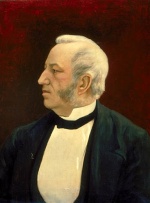Recent Articles
The Point: a Franco-American Heritage Site in Salem, Massachusetts
Traditional French Songs in Ontario
Fort William, Crossroad of a Fur Trading Empire
The Guigues Elementary School in Ottawa
Centre franco-ontarien de folklore (CFOF)
Centre de recherche en civilisation canadienne-française (CRCCF)
Articles
-

Boulevard Saint-Laurent: the Very Essence of Montreal
Boulevard Saint-Laurent is one Montreal's few thoroughfares that date back to the New France era. What began as a country road grew into a route for transporting merchandise, as it became a commercial hub on the outskirts of the walled city, before finally coming to play a central role in a burgeoning urbanisation and industrialisation movement that eventually spread throughout all of Quebec society. Over the years, an exceptional level of cultural, artistic and linguistic diversity has also been drawn to the Boulevard, mostly the result of immigration. As a result of this growing diversity, for many decades the boulevard has come to symbolise the city's growing modernity. For all these reasons, the Boulevard Saint-Laurent was designated National Historic Site by the Government of Canada in 1996.
-

Expo 67 in Montreal, a Landmark Event
Between April 27 and October 29, 1967, over 50 million visitors passed through the gates of Expo 67 to attend what would prove to be one of the largest world's fairs in history. Even today, evidence that Expo 67 was a major event can be found both in the cityscape of Montreal and in the collective memory of contemporary Quebec. This crowning event in Canada's centennial celebrations brought together 62 participating nations, international organizations, large Canadian companies and other groups, under the theme "Man and His World". It opened Quebec to the world. It also led to the development of expertise that is now one of the distinguishing features of Montreal and of the Province of Quebec, which have come to be recognized for their ability to organize festivals and avant-garde museum exhibitions. A cultural circuit and various commemorative events have helped keep the memory of this extraordinary event alive.
-

Louis-Joseph Papineau House in Montreal
In 1814, the eminent politician Louis-Joseph Papineau (1786-1871) acquired one of the loveliest homes in MontrEal. He had it remodelled in 1831-1832 to make it even more attractive. The home's architecture and interior design reflect a mix of French and British influences characteristic of the period. Papineau's house was attacked in 1834 and again in 1837, first by Loyalists and then by members of the Doric Club, who were opposed to Papineau and the emancipation of the French Canadians. The house bears witness not only to Papineau's dramatic personal story, but also to the history of the French Canadian people at the time of the 1837-1838 rebellions. Its restoration in the early 1960s was at the very heart of the movement to revitalize Old Montreal.
-

Montreal Botanical Garden
The Montreal Botanical Garden owes its existence to one man's determination. A priest known as Brother Marie-Victorin (1885-1944), the eminent French-Canadian botanist and teacher, dedicated himself to promoting the importance of scientific learning among his compatriots at a time when science was little valued in traditional French-Canadian society. The Garden is one ofhis most lasting achievements. Designed by the visionary landscape architect Henry Teuscher, the Montreal Botanical Garden is sometimes referred to as a"northern wonder." The internationally renowned facility marries natural beauty with an educational vocation, as its founder intended. It is also one of Montreal's major tourist attractions.
-

Montreal Canadiens; a Religion
The Université de Montréal announced in January 2009 it would offer a 16-week graduate course to future clerics called "The Religion of the Montreal Canadiens," and instead of poking fun at the ivory tower of academia, the media took the question quite seriously. Two months later, when word came out that the cash-strapped American owner of the Canadiens had put the team up for sale, the news was met with even more serious soul searching, if not a widespread spiritual crisis. The speculation was that Quebec-based saviours such as Cirque du Soleil's Guy Laliberté and René Angelil would come to the rescue of the faith. In a short time, these two events suggested that the Canadiens were much more than a hockey team, but rather, an essential component of Quebec identity in the way the Catholic Church used to be. The Canadiens' very existence provides a meaning of life for millions - for the game, its heroes and their fans do indeed make up a sort of "secular religion".
-

Montreal’s Cultural Diversity Heritage
As the main point of entry for most immigrants to Quebec, Montreal, the largest French-speaking city in North America, moves to the beat of multiculturalism. Cultural communities are a major component in the identity of this metropolitan centre. However, their presence has often been obscured by the dominant French or English-language cultures. Whether it be buildings, monuments, public spaces, works of art, place names or simply the general atmosphere of certain areas, the heritage contributed by the cultural diversity of the city is very apparent. Often it delineates the neighbourhoods where various cultures live and even coexist. Consequently, cultural diversity has always been an issue of public concern both for city administrators and politicians alike and is often central in debates-particularly when it is a matter of defining what constitutes and what should constitute Montreal's urban heritage.
-

Saint Sulpice Seminary, Montreal
Saint Sulpice Seminary is one of Montreal’s oldest buildings. Erected in 1684 on Rue Notre-Dame near the old Notre-Dame church, it is also one of the oldest in America still used for its original purpose, that is, as a residence for members of the Society of Priests of Saint Sulpice. It has been part of the Historic District of Old Montreal since 1964, was designated a historic monument by the government of Quebec in 1985, and was recognized in 2007 as a national historic site by the Historic Sites and Monuments Board of Canada. It is a true jewel of French heritage in America.
-

The Château Ramezay Museum, Montreal
The prestigious family residence built in 1705 by Claude de Ramezay, governor of Montreal, today houses a historical museum, the Château Ramezay Museum, across from City Hall in the heart of Old Montreal. This building is one of the few from the French regime that remain in the city. The Château Ramezay Museum, opened in 1895, is thus the first Quebec museum devoted to history. The building was also the first to be classified as a historical monument by the Commission des monuments historiques de la province de Québec in 1929. The unique story of this three-hundred-year-old residence is an excellent illustration of how the role played by heritage has changed in the society of Quebec and of Canada.
-
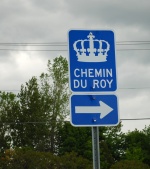
The Chemin du Roy between Quebec City and Montreal
Today the Chemin du Roy, or King’s Highway, is a well known heritage route. Motorists along the north bank of the St. Lawrence River between Quebec City and Montreal can take Highway 138, which follows the approximate path of the original King’s Highway. Along the Chemin du Roy tourist route, blue signs guide drivers from town to village among the region’s heritage buildings and landscapes. Avenue Royale—which is a continuation of the original Chemin du Roy east of Quebec City—is yet a further occasion to visit and take in several additional heritage treasures. But the original King’s Highway, which was the first road to link Quebec City with Montreal was built in 1734. Along its winding course one can discover a condensed history of transportation in the St. Lawrence Valley.
-

The Montreal Olympic Stadium Complex
Unique in all of North America, the bold architectural style of the Montreal Olympic Stadium makes the building’s architecture one of the emblems of the City of Montreal. Designed by the French architect Roger Taillibert, in order to host the 1976 Summer Olympic Games, today the building has not only become a part of the architectural heritage of metropolitan Montreal, but also of the Province of Quebec and of Canada. Even though the general populace has a special affection for this piece of organic and sculptural architecture—which testifies to the international significance of an event that marked the rising of modernism in the Province of Quebec—many facets of the story how it was built and its short, but varied history remain unknown.
-

The Old Port of Montréal
Montréal’s port has been an important link in the economic and social history of Canada since its foundation. The many examples of its rich heritage attest to its constant evolution – first as a place of transit and then later as a port of entry to the West – from the arrival of the first Europeans up till the present day. The port’s features have been adapted over the centuries to meet the ever increasing economic and technological needs. It has gone from being a natural harbour for beaching vessels to an international port. This heritage site is now part of the Old Montréal historic district and of the Lachine Canal National Historic Site of Canada.
-
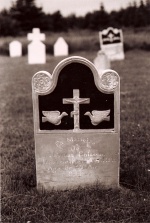
Acadian Cemeteries in Nova Scotia
A sacred place of remembrance, the Acadian cemetery has changed considerably over the centuries. Located in a rural area, beside a chapel or a parish church, the Acadian cemetery has gone from being a simple green space with a few wooden crosses to a carefully levelled terrain dominated by rows of perfectly aligned gravestones. Funerary iconography has also evolved. The cross, the flaming heart and the finger pointing to heaven have given way to secular symbols of work or pleasure, such as the fishing boat, the hunting scene, the Bingo card or the royal flush. Whether old or new, the cemetery bears witness to the customs and values of many generations of Acadians.
-

Adapting to Winter: Transportation
Winters in Quebec are long and harsh. When the first French immigrants settled on the banks of the Saint Lawrence, adapting to Quebec’s winter was a major challenge. Every aspect of day-to-day living was affected—agriculture and food supply, transportation, lodging, clothing, human relations, and culture. Amerindians were instrumental in helping the settlers to adapt. Then, as one generation gave way to the next, the ingenuity of the inhabitants and their determination to alleviate the hardships of winter led to the invention of ever more effective tools and equipment and the development of new ways of dealing with the harsh conditions. Today, Quebeckers can take part in most of the same activities year round—a situation that was still inconceivable not so long ago. Our gradual adaptation to winter marks our history and our heritage and provides the artifacts that fill our museums and our memories.
-

Alexis de Tocqueville in Louisiana in 1832
Alexis de Tocqueville (1805-1859) journeyed to the United States in 1831 and 1832 accompanied by his colleague, French Magistrate Judge Gustave de Beaumont. His official purpose was to study the penal system in place there. Despite his official purpose, his travels enabled him to better understand the phenomenon of democracy in America and its inevitable development. This journey also permitted the two men to establish first hand contact with the aftermath of French colonization in North America for the first time. They came into contact with survivors from the final years of French military and political presence on the continent. Tocqueville and Beaumont had previously spent time in Lower Canada at the end of summer in 1831. Then, from the 1st to the 3rd of January, 1832, they went to New Orleans, Louisiana. The observations made during this last visit stood out in contrast to what they had seen in Lower Canada.
-
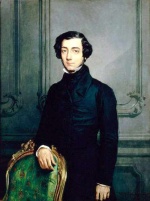
Alexis de Tocqueville’s visit to Lower Canada in 1831
In Alexis de Tocqueville's works, many pages are dedicated to the inhabitants, their historic destiny, as well as to the cultural and political situation of Lower Canada within the British Empire. His writings offer acute observations and penetrating analyses on the topics listed above. Alexis de Tocqueville (1805-1859) is notably famous for his masterpiece Democracy in America (1835), which offers a brilliant analysis of the inevitable advent of the young United States of America's democratic society. In this work, Tocqueville examines with care, a civilisation characterised by a desire for equality, a sometimes fanatical individualism and the ever looming tyranny of the majority. The work is based on meticulous observations, accumulated during a nine-month journey across the country (from May 9th, 1831 to February 20th, 1832) with a colleague, the magistrate, Gustave de Beaumont. It is less widely known that the two travellers also visited Lower Canada from August 23th to September 2nd, 1831, as Tocqueville did not write any specific works as a result of that particular voyage.
-
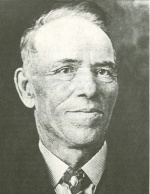
Alexis Lapointe, a.k.a. Alexis le Trotteur (1860-1924): the Man, the Legend
Alexis Lapointe, known as "LeTrotteur", "le Cheval du Nord," the "Surcheval," and the "Centaur", was the subject of both admiration and mockery in his day. Over the course of his lifetime, he remained a simple labourer, an odd man whose tomfoolery brought joy to those around him. In death, however, he became a mythical figure, a legendary athlete the likes of which he himself would never have imagined. And what can be said about the exhumation of his remains from a cemetery in La Malbaie in November 1966, 42 years after his death? What about the exhibition of his skeleton in museums throughout the Saguenay for 35 years? This poor fellow seems to have become more famous in death than in his life.
-
Animal Folk Art
Animal themed folk art is commonly found in the province of Quebec. Its origins are lost in the mists of time, most of the earliest creators being anonymous. This did not keep them from leaving works to posterity, whether they expressed an astonishing realism or the creator's flights of fantasy. For woodcarvers the number of subjects is varied but almost always in close relation with their natural surroundings. These artists have passed on their knowledge with each generation. This art, once ignored and even despised, has over recent decades started to attract the attention of collectors, museologists and researchers from various fields. After having been long neglected, animal folk sculpture now claims its rightful place in museums.
-

Anticosti National Park
With the creation of Anticosti National Park in 2001, this wilderness area was officially preserved as part of the Province of Quebec's natural heritage. The park includes the Vauréal Falls Area, which is considered to be a place of extraordinary natural beauty meriting public protection and government recognition. Anticosti is however so much more than the sum of its physical and natural features. It is impossible to fully grasp the ramifications of the park's newly acquired heritage status without taking into consideration the various social factors involved, as well as island's history of human inhabitation. When examined from this perspective, Anticosti becomes a model example of the inextricable relationship between humans and their environment, which are key elements essential to the process of protecting and promoting natural areas in the Province of Quebec.
-
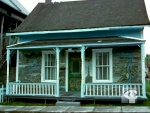
Arthur-Villeneuve House: a Testimony to an Artist’s Life and Work
Visitors to the Musée de la Pulperie de Saguenay are undoubtedly surprised to see painter Arthur Villeneuve's home displayed inside the museum like some piece of artwork. The residence, originally a museum within a house, is filled with pieces by local barber and painter Arthur Villeneuve. The residence-cum-museum was the object of many heated discussions before being established as a remarkable artistic statement. Considered naïve art, or perhaps art in its most basic form, Villeneuve's pieces may at first glance seem traditional or picturesque in origin, but they sometimes reveal a hint of surrealism. The artist's home, recognised as a national heritage asset by the Canadian government in 1993, has since come to hold a special place in the history of 20th centuryQuebec art.
-

Association Canadienne Française de l’Alberta (ACFA)
In 2011 Alberta’s francophones comprised 2.2% of the province’s population. Protecting the French language in Western Canada has long been a struggle. As far back as 1926, Franco-Albertans formed an association to defend their interests and provide French-language education to the francophone population. Association canadienne-française de l’Alberta (ACFA) is active both on the ground in francophone communities and in provincial and federal politics where it has been instrumental in ensuring that Alberta’s francophone cultural heritage is preserved and passed on.
-
Assomption Sash
The Assomption (or arrow) sash is a symbolic piece of clothing central to the culture of the French-speaking population of North America. The item was widely worn for almost a century, from the end of the 18th to the end of the 19th century, before it fell into disuse, a result of the decline of the fur trade industry. Subsequently, this "masterpiece of Canadian domestic textile industry", as E.-Z. Massicotte once put it, came to be associated with the traditional cultures of the French-Canadian and the Métis. Today, enthusiasts have committed themselves to safeguarding of this cultural custom. Thanks to artisans who continue to weave sashes according to traditional methods, this unique technique has been kept alive.
-

Baie-Ste-Marie (Nova Scotia) Eudists
In 1890, the Eudists [Congregation of Jesus and Mary] arrived from France to set up an educational institution for Nova Scotian Acadians of Baie Sainte-Marie [St. Mary's Bay]. They also took charge of two parishes in the region. Over the decades that followed (mainly until the 1970s), members of the Congregation would fill the roles of educator, religious community builder, administrator, writer, and even nationalist. Their presence at Point-de-l'Église [Church Point] is an example of a cross-cultural encounter between the French and Acadian communities that left its mark on the region on architectural, cultural, and religious levels. The gradual transition from being a congregation consisting mostly of French priests to one staffed almost entirely with Canadian clergy created a balance between these two cultural factions within the institution. Over the years, the Eudist contribution to the Nova Scotian French-speaking community's heritage has been expressed in a wide variety of ways.
-
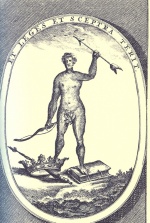
Baron of Lahontan
After having enjoyed a considerable success in Europe with the 1702-1703 publication of his three-volume memoire - mainly inspired from his long stay in New France (1686-1693) - Lahontan was all but forgotten for more than two centuries. Then his works were rediscovered in the 1970s, and subsequently came to be considered essential, as they offered a better understanding of the literary evolution of the travel literature genre, as well as of the libertarian movement that swept over Europe during the age of Enlightenment of the 18thcentury. His work is also thought to be an invaluable contribution to the history of New France. Lahontan, an antihero who was not nearly as publicised as Champlain or other legendary characters of New France, has produced a work that today still assists scholars in better understanding French cultural heritage and history.
-

Beauport «Seigneurie»
Few concepts are as closely linked with the history of Quebec as the seigneurial [feudal] system, which was established along the St. Lawrence River in the early days of colonisation by the French. The landscape, heritage assets and place names of the St. Lawrence valley still bear the marks of seigneurial feudalism, which, after having survived for nearly a hundred years under British rule, was abolished in 1854. However, Quebec-especially rural Quebec-continued to be defined by the seigneurial system long after 1854. Although seigneuries were a major cornerstone of Quebec's history, the remaining traces of their existence do not always reflect their importance. In some areas, the remains of a seigneurie have given rise to a veritable heritage industry, while in others they seem to have faded into obscurity. Beauport, one of the oldest seigneuries in Canada, is a perfect example of this paradox.
-

Blacksmith’s Trade in the Province of Quebec
In recent years, there has been a veritable renaissance in the traditional blacksmith's trade, especially with regard to art metal work, decorative wrought iron and the restoration of historic buildings. Some interpretation centres even offer visitors and neighbouring communities a range of useful products made to order by artisan blacksmiths. It is impossible to fully appreciate the re-emergence of these almost forgotten practices without first understanding the long and storied history of blacksmithing in Quebec, which was marked by a continuous evolution of trade practices and techniques that started back in the days of New France. It is also important to point out the resilience of the blacksmiths despite the many threats to their trade: harsh working conditions, fickle economic cycles, the dawn of industrial mass production after 1850 and the advent of the automobile in the early 20thcentury.
-
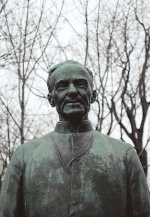
Brother André, Founder of Saint Joseph’s Oratory
Brother André, a man of the people, orphan, worker of modest means and humble brother of the Holy Cross, hardly seemed destined for great things. Yet for over a century, his name has been associated with one of the world’s biggest Christian shrines, Saint Joseph’s Oratory on Mount Royal in Montreal. Pilgrims flock to the basilica that he had built and masses are celebrated there daily. But in keeping with Brother André’s wishes, the hallmark of the Oratory is the care and attention paid to the sick and the suffering. Brother André’s compassion for others and the scope of his accomplishments are a valued part of Quebec’s cultural heritage.
-

Calvaire Hill at Oka
Calvaire Hill at Oka is an important heritage site that is not very well known today. It is located in the heart of Parc national d’Oka, west of Montreal Island. Construction of this Way of the Cross goes back to the 1740s, when New France was at its height. It takes the form of a forest path leading to three chapels perched at the top, with four oratories at intervals along the path. Originally missionaries used it to teach Amerindian converts the stages of the Passion of Christ. In the 19th century, the Calvaire d’Oka became one of Quebec’s most important pilgrimage sites. Since 1974, park authorities have sought to protect the unique character of this site and to enhance this jewel of religious architecture dating from New France.
-
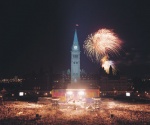
Canada Day
Celebrated on the first of July, Canada Day (or Dominion Day as it was officially known until 1982) commemorates the Canadian Confederation of 1867. In 1958, the federal government of John Diefenbaker began the tradition of hosting official celebrations in Ottawa, combining both formal and festive components, to commemorate the founding date of the country. The nature of the celebrations held in the National Capital Region have changed over time to reflect changing conceptions of Canada's national identity. Grouping together performers from across the country, these celebrations, taken together, present an evolving conception of the linguistic and cultural heritage of Canada.
-

Canada’s Forillon National Park
Located on the eastern tip of the Gaspé Peninsula, Forillon National Park is a Parks Canada site representative of the region's rich natural and cultural heritage. Here, land and sea meet to forge unique and spectacular landscapes. At Forillon, the sea's influence is everywhere, leaving its mark on the landscape, the shape of the coastline, the temperateness of the climate, which supports abundant marine life and serves as a constant reminder of what first drew people to the area. The park's unique natural environment is home to more than ten distinct geological formations, as well as several large seabird colonies. The area also has a fascinating history. The first Europeans settled along the rugged coast in the 18th century, near the small coves that were well suited to fishing. The park was established in 1970 to protect and promote this rich heritage. Its creation was however marred by controversy, as local residents were force to move off their lands, in order to make way for an idealized pristine wilderness.
-
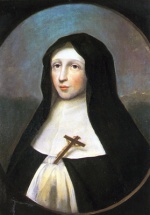
Catherine de Saint-Augustin, Remembered from Quebec to Normandy
Beatified by Pope Jean-Paul II in 1989, Catherine de Saint-Augustin is considered to be one of the founders of the Canadian Roman Catholic church. Born in Saint-Sauveur-le-Vicomte (Normandy, France) in 1632, Catherine de Longpré joined the ranks of the hospital order in Bayeux in 1644. A short time later she volunteered to assist the nuns operating the Quebec City Hôtel-Dieu hospital, and so, in 1648, she set foot in New France for the first time. In the land of her adoption, she led an exemplary life and died there of an illness at a very young age in 1668. Her growing renown in the Province of Quebec in the 19th century for her good works eventually opened the way for her to be venerated in her homeland of France.
-

Centre de recherche en civilisation canadienne-française (CRCCF)
The Centre de recherche en civilisation canadienne-française (CRCCF) (Centre for Research on French Canadian Culture) is the oldest research centre on the literature, culture and history of French Canada. In this respect, the CRCCF stands out and plays a leading role through its research, publication, dissemination, acquisition and preservation of a rich collection of archives. The Centre, a scholarly and cultural organization, is the main body preserving the collective memory of French Ontario, which it enhances through interuniversity initiatives, colloquia, exhibits, lectures and publications, to encourage the advancement and development of this culture.
-

Champlain’s astrolabe: the journey of a mythical Canadian heritage object
An astrolabe that may have belonged to the explorer Samuel de Champlain was discovered in 1867 near the Ottawa River. More than a century later, this precision instrument known as "Champlain's astrolabe" has become one of Canada's most highly prized heritage objects and it now belongs to the permanent collection of the Canadian Museum of Civilization. The unique journey of this iconic object of Canadian history resembles a fictional tale, with first Champlain as the central figure, and then the astrolabe. We invite you to discover how this 17th century navigation instrument became a Canadian heritage symbol.
-

Charles de Gaulle and “Vivre le Quebec Libre!”
On July 24th, 1967, French President Charles de Gaulle ended his speech on the balcony of Montreal's city hall with the salute "Vivre le Québec libre! [May Quebec live long and free!]" This extraordinary statement echoed around the world and has helped put Quebec on the map, particularly for the French. This event was not the natural outcome of long standing relations between the French Republic and the Province of Quebec. In fact, it constituted a total break away from everything that had happened up to that point, particularly since the reestablishment of trade relations in 1885. For the first time, a visiting French dignitary had decided to take revenge for the 1763 defeat, deliberately ignoring the sensibilities of Ottawa, London and Washington's susceptibility, all of which he ended up annoying considerably. France and Quebec have since then enjoyed close relations maintained by their successive governments.
-

Chaudière Falls in the Outaouais Region
Valuable traces of French-speaking America are found in the Chaudière district, situated a kilometre from the Canadian Parliament Buildings. The Voyageur Trail, the timber slides, the Chaudière Bridge, and the industrial buildings all recall a French-speaking past and the intermingling of the French-speaking and other communities. In addition to these concrete reminders, there are also figures of national historic significance associated with the site, including Philomen Wright, founder of the small settlement that would become the City of Gatineau. Also of note, the history of the Chaudière district has been portrayed in a series of landscape paintings and drawings. These works of art add imagination to the memory of the site and play an important role in ensuring that its spirit lives on.
-
Chauveau Collection
The Chauveau Collection is not only a priceless testament to intellectual life in the 19thcentury, but also to one of the era's outstanding academic figures, as well as to the establishment of one of the first public libraries in the Province of Quebec. Very few of Quebec's historic libraries and collections are classified as heritage treasures. In fact, the collection assembled during the 19th century by Premier Pierre-Joseph-Olivier Chauveau was the first to be granted heritage status (including all of the obligations that such a status entails: i.e. preserving the collections original condition; maintaining it in good condition; limiting collection circulation to the Province of Quebec, unless otherwise permitted by the government; and ensuring that it remains the non-transferrable property of under the protection of the state.
-

Christmas Celebrations
Christmas has not always been the centre of interest with French-Canadians through the months of December and January. Up until the late 19th century, New Years Eve was the community's most important winter time celebration. It is quite surprising that, under the joint influence of Catholic priests and shopkeepers, French Canadians gradually began to celebrate and cherish Christmas more than New Year's Eve. But, where the clergy had wanted to impose the image of baby Jesus, it would finally be Santa Clause who would quickly become the ideal holiday symbol.
-
Cirque du Soleil (Origins): Les Échassiers de la Baie and the Baie-Saint-Paul Fête Foraine [Festival]
To date (2009), the Cirque du Soleil is without a doubt Quebec's most internationally renowned cultural enterprise. This undeniable commercial success is the fruit of projects that took place in Baie-Saint-Paul (in the Charlevoix region) in the 1980s. At the time society was ripe for such an experimental endeavour, particularly because during the 1970s in Quebec, a substantial part of the rising generation left urban population centres in search of a different worldwith different values. As a result, many "rediscovered" Charlevoix and Baie-Saint-Paul and since, the region has become a mecca for many hippies and migrant peoples. It was truly of a case of somewhere between "the Gaspé and all the way to California," to cite Pierre Flynn. 25 years after its humble beginnings in Charlevoix, this monumental cultural enterprise today known as the Cirque du Soleil has finally taken its rightful place in the history of the community of Baie-Saint-Paul and now it constitutes an important piece of cultural heritage for Quebec.
-

Citadel of Quebec
The Citadel of Quebec is the largest military fortification in Canada still in active service. Perched on top of Cap Diamant adjacent to the Plains of Abraham, it is an integral part of the city's old defensive works. The Citadel was built by the British in the early 19th century to protect Quebec City against American invasion. Today, it is the home of the Royal 22e Régiment of the Canadian Armed Forces and also houses an official residence of the Governor General of Canada. The Citadel of Quebec is recognised as a National Historic Site of Canada.
-

Claude Le Sauteur (1926-2007): the Enlightened Artwork of a Lighthouse Keeper
Head and shoulders above the rest; that is quite possibly the most defining characteristic of the figures found in the works of artist and painter Claude Le Sauteur (1926-2007). Although the faces can seem vague and even ill-defined at first glance, the head dominates nonetheless. It is neither tortured nor fractured. There is no veneer of surrealism; the artist's every move is composed and calculated. The tone is just right. The keen mind of a lighthouse keeper knows how to observe. Claude le Sauteur was both renowned and subtle, well-loved by both the great and small of the land. The colours found in his depictions of Quebec's landscapes, scenes and heroes are vibrant, yet soothing. Like a lighthouse keeper, Claude Le Sauteur had his eye set on the horizon, and now many are seeking to understand his stunning perspective on a facet of our national and regional history that, up until now, has almost been entirely ignored.
-

Community Governance of the Francophone Minority: a Cultural Heritage
As a whole, the francophone minority in Canada has survived and is developing thanks to a constant investment in what could be called community governance, that is, the forms of organization that it has adopted in order to form a group and to influence public authorities. Governance of the francophone minority, now woven throughout the fabric of the country, was formed gradually to protect against the attacks of an often-hostile majority. By its persistence and its resilience, this governance is rich in lessons learned and is an integral part of French cultural heritage in North America.
-

Coverdale Collection
With multiple thousands of objects, the Coverdale Collection is one of the most important in the history of heritage conservation. Assembled from 1928 to 1949 by William H. Coverdale, president of Canada Steamship Lines, the colossal collection includes ethnographical and archaeological items, as well as some very old images. The collection is primarily known for its portrayal of Canadian history and the traditional French-Canadian way of life.
-
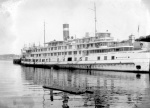
Cruises on the Saint Lawrence River
The Saint Lawrence River cruise industry has a long and rich history going back to the beginning of the nineteenth century. Intense competition among groups of Quebec businessmen gave rise to a passenger transportation empire, culminating in the formation of the Canada Steamship Lines in 1913. This company operated the famous "white boats" cruise circuit, which was active from the 1840s until the 1960s, and the luxury hotels built for its wealthy clientele. At the turn of the twentieth century, these cruises and hotels, and the resort areas in which they were located, were known throughout North America. Today, this industry is turning to the clientele of international cruises, making the Saint Lawrence River ports essential ports of call.
-

Dance of the Unwed Older Sibling
In French-speaking Ontario, especially in the north of the province, a region, which has been settled for a little more than a century, there is a flourishing wedding tradition that is intended to "punish" the happy couple's unmarried older siblings. Of all the names that have been associated with the tradition over the years and in the various regions it is practiced, the sock or trough dance are the most common. Interestingly enough, the tradition is practiced throughout French-speaking North America, although it has only recently been the object of study, particularly in outlying areas. Furthermore the custom has been largely forgotten by the cultures from which it originated, namely in France, which brought the tradition to the New World.
-

Daniel Johnson Dam and the Manic 5 Generating Station—Symbols of Modernity in Quebec
The Daniel Johnson dam and the Manic 5 generating station, a hydroelectric complex located 214 km north of Baie-Comeau in the Côte-Nord region of Quebec, remain strong symbols of Quebec’s hydraulic wealth and technical prowess for a majority of Quebec’s citizens. The emblematic power of these facilities might be summed up in the expression “We can do it after all!” NOTE 1 On the one hand, this treasure of Quebec’s heritage—the world’s largest multiple-arch and buttress dam—is the expression of undeniable know-how put into action by the engineers of Hydro-Québec and Quebecois engineering consultants. On the other hand, this hydroelectric complex, more than any other, embodies a society that has definitively reclaimed control of development of its primary source of wealth—namely, its hydraulic resources—for the improvement of the greater common good.
-

Detroit River: A Special Place in French North American History
In 2001, the Detroit River was added to the Canadian Heritage Rivers System. This honor came after its nomination the previous year as a natural heritage site by the United States government. In fact, it is the only river in North America to be designated by both countries as such. The Detroit River is the site of the oldest enduring European settlement in North America. It is also the home of the first permanent French-speaking community west of Montreal. Members of this community celebrated the 300th anniversary of the Detroit/Windsor region in 2001. The slogan of the celebrations was "Returning to our roots - Shining a light on our future!" French-speaking people of the region have a common objective: to have the area recognised as an important piece of French history in North America. The Detroit River is an important symbol that creates a sense of belonging for French speakers of the region, just as the Saint-Lawrence River is an important symbol for the French Canadians of Quebec.
-
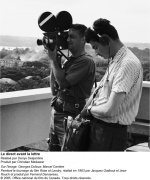
Direct Cinema and the National Film Board
Direct Cinema has had a profound influence on the history of the film industry. With the use of the lighter filming equipment available that became available in the 1950s, documentary filmmakers were able to get closer to their subjects, thereby making their movies much more vivid and personal. In so doing, film producers were able to present their subjects in such a more genuine, realistic light, that the movement has sometimes been called Cinéma-vérité or “truthful cinema”. Filmmakers from the National Film Board of Canada had a significant influence on the development of this particular approach to filmmaking, especially during the late 1950s and throughout the 1960s. The production of major French Canadian films, such as Les Raquetteurs, La Lutte and Pour la Suite du Monde, ensured that Direct Cinema would have an important place in the world of filmmaking. Today, the influence of Michel Brault and Pierre Perrault (some of Direct Cinema’s main architects) is widely recognised. These filmmakers helped establish the movement and left a legacy that has brought filmmaking to new levels of expressivity and which still influences filmmakers around the world today. Their contribution to cinematography is well documented, not only through a profusion of written articles, but also through the collections of films compiled from among the works of the most well known of them.
-

Dollard des Ormeaux
Adam Dollard des Ormeaux, an emblematic figure representative the history of New France, was long the object of extraordinary patriotic fervor. The battle that he waged with a handful of comrades against an entire Iroquois army in 1660 left its mark on the collective memory. The festivities in honour of his "Long Sault exploit" reached its peak during the 1920-70 period and was celebrated in many ways, most notably the Fête de Dollard celebrated every year in Quebec on the same date as Victoria Day in the rest of Canada. Nevertheless, since 2003, this celebration has been replaced by National Patriots' Day, a clear indication that this figure and his heroic feats no longer have the same widespread significance. One day, the question may arise as to what extent Dollard des Ormeaux is still part of French cultural heritage in North America.
-

Economuseums: Keeping Traditional Crafts and Know-How Alive in French-Speaking Canada
The Economuseum network’s mission is to promote and sustain traditional crafts and know-how. Through its combined focus on culture (presenting traditional crafts and trades), education (passing on traditional knowledge) and business (supporting artisanal business ventures), the network helps foster cultural diversity in the regions, preserve living heritage and promote sustainable development. Inspired by Félix Antoine Savard’s Papeterie Saint-Gilles in the Charlevoix region of Quebec, the network was created ten years after his death. Today it boasts fifty members in Quebec and the Atlantic provinces and is attracting new members from across Canada and around the world.
-

Emblematic Landscapes of Lac-Tremblant-Nord: Natural Scenic Area and Cultural Heritage Asset
Lac Tremblant is well-known due to its proximity to Mont Tremblant, which looms over it. The uniqueness of the site resides in the fact that, historically, the land use of Lac Tremblant has long been split into two subdivisions, which is reflected in the area's distinct landscapes. The southern part of the lake and the mountain have been turned into a world-renowned recreation area, whereas, since the beginning of the 20th century, the northern segment has been protected as a natural heritage scenic area, a fact which is evident in natural features of the region. In this way, the Municipality of Lac-Tremblant-Nord has preserved and carefully shaped the landscapes that now have become such a part of its distinct unique identity, a uniqueness that, for the local residents, is so much a part of what makes them proud to live there. From the earliest days, this natural scenic heritage, with all of its age-old evocative power, has been a protected area; long before such conservation measures were the norm. Today, however, it is now being threatened.
-
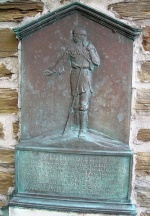
Étienne Brûlé, The First Franco-Ontarian
Étienne Brulé, despite being an occasional sidekick to Samuel de Champlain, is an obscure character in the history of New France. He left no writings and we know very little about his life. The accounts of life, as few as they may be, have nonetheless have undergone many changes in the last 400 years. Sometimes presented as a traitor and at other times a hero, people are fascinated by his scandals, his achievements, and the mystery surrounding his death. Today, he is celebrated as the first French settler to have lived in the territory that is now the province of Ontario. Some view him as the founder of the French-speaking community in Ontario.
-
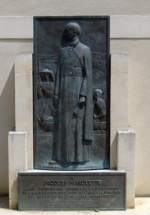
Father Marquette Monument in Laon: Commemorating an North American Historical Figure on French soil
Born in Laon, Northern France, in 1637, the Jesuit priest Jacques Marquette discovered the Mississippi River in 1673, as he explored the region alongside Louis Jolliet, the Quebec-born noble, merchant and explorer. Father Marquette died near the present-day city of Ludington, Michigan, in 1675. When his bones were discovered in 1877, he became a renowned historical figure in the United States, but remained largely unrecognized in France. The story of the monument built in 1937 in Marquette's hometown to honour this North American historical figure illustrates just how whimsical the local memory of him could be. A Jesuit long-disowned in France due to anticlericalism, Father Marquette was honoured in his home country when his historical contributions as an explorer and mapmaker were finally recognised.
-

Father Potier’s Glossary of Spoken Canadian French
The French language is without a doubt the key heritage element shared by New World French speakers. Over a period of four centuries, North American French has survived and evolved, its various dialects and accents multiplying as a result of the diverse natural and cultural surroundings in which it has taken root. Furthermore, the various cultural encounters and conflicts, as well as the occupations, vocations, and areas of expertise of its speakers have their mark on the vocabulary, the expressions and the structure of each variety of the language. One of the most important documents for the study of the history of North American French is the manuscript entitled Façons de Parler Proverbiales, Triviales, Figurées, etc., des Canadiens au XVIIIe Siècle [Proverbial, Everyday and Figurative Expressions, etc. of 18th Century Canadians]. It is a little notebook compiled between 1743 and 1758 by Father Pierre Philippe Potier, a Jesuit missionary to the Hurons of the Detroit River region. This glossary of spoken Canadian French was the first - and in fact the only - work of its kind to document the French spoken in New France. Potier jotted down most of the words of his glossary while serving in the Detroit River area, where he was a missionary from 1744 until his death in 1781. The document is therefore of great importance to the French speakers of this region.
-

Félix Leclerc, Québec’s pioneering singer-songwriter
Félix Leclerc, already a highly-acclaimed author in the early 1940s, and well-known in particular for his trilogy, Adagio, Allegro and Andante, did not initially see himself as a singer-songwriter or chansonnier. The reason was simple: the French Canadian literary establishment saw no inherent value in the poetic character of Leclerc’s few early musical texts. For the literary pundits of the time, such songs could at best be considered in the same category as French music hall ditties, a genre they considered frivolous, or else folk music, which they looked down on. It was the response in France to Félix Leclerc’s songwriting and performing style that transformed perceptions of his “poetry given voice”. Leclerc was a pioneer who opened the way for the concept of “songs with content”, and in fact gave legitimacy to this way of singing which would become so popular in France, in Québec and all across French Canada.
-

First Recordings of Popular Songs in French Canada
Vinyl recordings of French-Canadian songs were first produced at the turn of the 20th century. While Anglo-American music dominated all the markets, social and cultural factors such as the massive migration of French Canadians to the United States and the appearance of music specifically intended for the various ethnic groups that were immigrating to the U.S. fostered the recording of popular songs in French. It is often forgotten that the effervecent Roaring Twenties preceding the Great Depression of the 1930s gave birth to the Quebec recording industry. In fact, during the 1920s, recordings of French-Canadian singers produced in Montreal proliferated and were a smashing success.
-

Fleming Mill
The Fleming Mill is located in Stinson Park overlooking Lac Saint-Louis in the Montreal borough of LaSalle. The mill was built out of stone in 1827 and is the only Anglo-Saxon-inspired mill still standing in the Province of Quebec. Since 1982, it has been the emblem of the LaSalle borough. In 1983, the mill was officially recognised as an archaeological heritage site by the Ministère des Affaires Culturelles du Québec. After being restored in 1990, it became a historical interpretation centre. The mill itself is a part of LaSalle's industrial heritage and its history tells the story of Scottish immigration into the area. The mill is thus an integral part of Montreal and an important part of its history.
-

Floral Beadwork: A Métis Cultural Heritage to Rediscover
In the late 18th century, Métis women from the Great Lakes and Red River area of Manitoba sewed moccasins, tobacco pouches, saddles, gloves and clothes decorated with bright colourful beads and silks that caught the eye of travelers. These imaginative women would develop a distinctive floral design that would become the most widely used style among the Métis throughout the 19th century. Natives referred to them as the "Flower Beadwork People" because of this style. In developing this trademark style, the Métis women have given Canadians a piece of unique cultural heritage. Although this art has long been forgotten and most still know very little about it today, there remain a few collections in museums that display some of these hand worked items, namely the James Carnegie Collection(9th Earl of Southesk), which is on display at the Royal Alberta Museum in Edmonton. As they once did in the past, the Métis women of today still create and sell clothing and objects. It allows them to gain more economic independence within the community and enables them to better support their families.
-

Floribec : Quebec in the Tropics
Floribec has been part of the collective imagination of the Quebecois for nearly 50 years. Over time, a movie, a novel, advertisements and news reports played an important part in establishing the greater Miami region as the destination of choice for Quebec tourists. Floribec began as a result of tourism and it later evolved into a transnational community. After visiting southeast Florida, some Quebec tourists decided to take up permanent residence there and to make their living providing services in French to other French-speakers. Motels, restaurants, convenience stores, lawyers, and other services for winter residents appeared, creating a Floribecois community, where the lifestyle and economy were largely based on the ever-present Quebecois tourists, visiting for a week or for several months. The result was a French-speaking community outside Quebec, distinct from other French-speaking communities in North America. However, the survival of the declining community is now in jeopardy.
-

Forges du Saint-Maurice
The vestiges of the first ironworks in Canada, in operation from 1730 to 1883, have been preserved and are displayed at the Forges du Saint-Maurice National Historic Site, 15 kilometers north of Trois-Rivières. A commemorative plaque, laid at the site in 1923 by the Historic Sites and Monuments Board of Canada, indicates the early recognition of the historical importance to Canada of the Saint-Maurice Forges. Historical and archaeological research, begun in the sixties by the Quebec Ministry of Cultural Affairs and carried on since 1973 by Parks Canada, has uncovered the rich French contribution to this example of the region's industrial heritage. This research has shown that the complex was built using technology developed and employed in earlier forges in France.
-
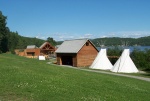
Fort Témiscamingue on Obadjiwan Point: a Place for Meeting and Exchange
The Fort Témiscamingue-Obadjiwan National Historic Site of Canada illustrates the important role the fur trade once had in the Canadian economy. It also testifies to the Franco-British rivalry for control of the fur industry. The industry also played a key role in defining the cultural perception the inhabitants of the Témiscamingue region had of themselves, regardless of whether they were Native Anishinabe (Algonquin) or French or English settlers. The Témiscamingue site has been a centre of human activity for about 6,000 years and various peoples have used it as a meeting place for making exchanges: the Anishinabe; the English and French voyageurs (NOTE 1) who plied the fur trade; as well as the French Canadian settlers of the Témiscamingue region. Today the site is a tourist attraction jointly managed by Parks Canada and the Timiskaming First Nation. This partnership is based on an agreement that is on the verge of being finalized. The objective of the project is to offer visitors a multi-cultural interpretation program.
-

Fort William, Crossroad of a Fur Trading Empire
Fort William, the operations base of the North West Company from 1803 to 1821, marks a milestone in the history of Canada. Starting in 1971, the fort was faithfully reconstructed as a historical site some 15 km from its original location at the mouth of the Kaministiquia River, on the north shore of Lake Superior. Fort William is a significant location in many respects. During the 18th and 19th centuries, it played a crucial role in the fur trade west of the Great Lakes, a major industry at that time, by serving as a meeting place linking the eastern and western parts of the continent. Today, it is still a meeting place, but now it connects the tens of thousands of visitors who flock to the site every year with the experience of the First Nations, French-Canadian, and Scottish people who were the key players in the story of this important turning point in Canadian history.
-

Fortifications in the Province of Quebec: a Part of the Region’s Archaeological Heritage
Modern-day Quebec is dotted with forts and the remains of old fortifications, traces of a military history dating all the way back to the days of New France. These installations, which were once inextricably linked with the political and socio-economic realities of the colony, are now a window to the past. With the purpose of situation the various discoveries made at these sites within the appropriate historical framework, archaeologists have delved into the history of these once lost vestiges. As a result, is it now possible to not only trace the work of the military engineers and trades people that designed them and to establish their role in the military strategies of the day, but also to determine the state of the colony at a given point in history.
-

Franco-Ontarian Flag
When the Franco-Ontarian flag was raised for the first time at the University of Sudbury on September 25, 1975, its two designers, Michel Dupuis and Gaétan Gervais, preferred to remain anonymous. They wanted the flag to serve as a unifying symbol for all Franco-Ontarians without it being linked to any particular group, such as the Sudbury community or Laurentian University. Their gamble paid off. Since its creation, the Franco-Ontarian flag has been embraced as the visual emblem of the entire Franco-Ontarian community and is proudly flown at festivals, celebrations, rallies, and demonstrations throughout the province.
-

French-Canadian Trappers of the American Plains and Rockies
The bicentennial celebrations of the expedition led by Lewis and Clark from St. Louis (on the Mississippi) to the mouth of the Columbia River (on the shores of the Pacific) took place in the United States in 2004-2006. The festivities revived interest in this period of history and resulted in a closer look at the situation that prevailed in the western part of the North American continent at the turn of the 19th century. The resulting research revealed two things: that there had been a considerable number of French-speakers in the region at the time of the expedition and that, historically speaking, their presence had received scant recognition. French speakers Toussaint Charbonneau and George Drouillard, who accompanied and guided the expedition, were among the most notable figures whose true role in history finally obtained recognition. Further nearly forgotten historical figures also began to emerge from the shadows: names such as René Jusseaume, Pierre Dorion, Joseph Garreau and so many more-all of whom Lewis and Clark's Corps of Discovery had encountered among the Amerindian tribes with whom they traded for furs on the shores of the Missouri.
-
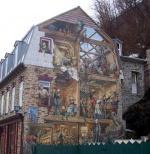
Fresco Wall Art in the Quebec City Borough of La Cité
In the last dozen years, a number of fresco paintings have popped up across Quebec City, becoming a real tourist attraction and a major component of the city's urban heritage. These frescoes depict the history of the city and its inhabitants and help visitors discover or recall fragments of the past. The murals, which are an ongoing heritage project, continue to change the face of Quebec City; they captivate passers-by and add a splash of colour and history to once-anonymous urban spaces.
-
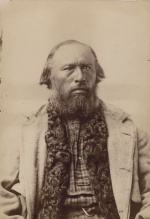
Gabriel Dumont, the Last of Great Métis Leaders
North America's Métis nation was born out of the meeting of the First Nations and European settlers between the 17th and the 18th centuries. Gabriel Dumont, along with his friend Louis Riel, are emblematic figures for this unique people group. He took up arms to fight for their rights at the battle of Batoche in 1885. He also spoke for them in New England and in Quebec, where, in 1888, he sought to present the French Canadian Métis as the civilisers of the Prairies. Even today, his leadership skills, his loyalty, his ability to make decisions and his exceptional determination are an inspiration to the many Métis community organisations in Canada and the United-States. Gabriel Dumont's actions have helped give the Métis people their rightful place at the heart of French cultural heritage of North America.
-

Gabrielle Roy House
On November 23, 2001, the St. Boniface home, where Gabrielle Roy was born in 1909 and where she lived until 1937, was designated a "Historical House" by the Legislative Assembly of Manitoba. Gabrielle Roy, the most famous Franco-Manitoban writer, whose works have been translated into and published in more than 14 languages, belongs to an elite group of French language authors from around the globe. In 1947, she became the first Canadian writer to receive the Femina prize, awarded in France, for her novel Bonheur d'Occasion [known in English as The Tin Flute]. The official opening of the restored St. Boniface home, where she was born, took place on June 19, 2003, after the long process of preserving and restoring it. Since then, the house has served as a museum, which includes an interpretation and exposition centre that presents the life of Gabrielle Roy and her family.
-

Genealogical Research in Quebec
Genealogy is above all else a family’s history. It is the study of one’s ancestors, whether it be the first generation or the tenth. A genealogy is the result of a combination of biographical, demographical and sociological research taken from records and archives. Over the years, Quebec has created a niche for itself in this particularly “lively” field of research.
-
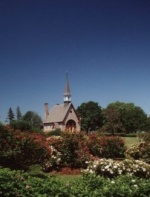
Grand-Pré in Acadie
In 1956, Grand-Pré was recognized by the government of Canada and by la Société nationale de l'Assomption, which at the time officially represented the Acadian people, as the "most important ancestral home of the Acadian people, a reminder of their most painful and most heroic hours, and it must offer future generations the example of a brave people whose culture and actions will forever enrich the Canadian nation." The site is a powerful symbol of the Acadian Deportation (1755-1762) as well as a romantic reminder of the "lost French paradise" of Acadie. Since 2012, the landscape of Grand-Pré is part of the prestigious list of UNESCO World Heritage Sites.
-

Harvesting the Stands of Eastern White Pine
In recent centuries, the forests of eastern North America have undergone drastic changes. Land clearing by European settlers and the various episodes of logging that followed have irrevesably altered the ecological course of timber stands across the continent. The white pine forests were not spared this upheaval, for they were the target of relentless harvesting that lasted over 250 years-a process so intense that the majority of the stands once populated by this precious resource have now disappeared. The logging reached its peak in the 19th century, initially in order to meet the needs of the British Navy and then to support the development of Canadian and American cities, towns and villages.
-

Henri-Gustave Joly and the Development of our Natural Heritage
Henri-Gustave Joly de Lotbinière was a multifaceted man: an honest politician, a wise businessman, a passionate tree-grower and an influential figure in Canada's linguistic duality in the 19th century. He came from an important New France family, but was born and educated in France, and he went on to make his mark on the political scene in Quebec, British Columbia and Canada. Because of his passion for horticulture and for trees, he was a promoter of forest conservation and he created a huge romantic garden-park, which has been restored in recent years and which is still recognized today for its beauty and the rare species it contains. He is remembered as an affable and scrupulously honest man, a champion of tolerance, and a visionary in the areas of agricultural progress and forest conservation.
-
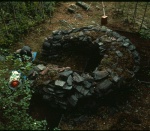
Île aux Basques
This tiny island, only two kilometre-long [1.25 mi] and half a kilometre-wide [.3 mi], is located in the St. Lawrence estuary across from the town of Trois-Pistoles. It is recognised as a heritage site not only for its diverse natural resources, but also for its rich cultural assets. In 1929, the Société Provancher d’Histoire Naturelle du Canada [Provancher Natural History Society of Canada] purchased Île aux Basques in order to turn it into one of the Province of Quebec’s very first protected nature reserves, because of its vast diversity of its bird population. In fact, some 229 species have been inventoried on the island. This impressive variety represents nearly two thirds of all of the province’s known bird species. As for cultural history, the island is not only the location of a considerable variety of Amerindian sites but it is also the site of the first Basque settlement in the Province of Quebec, which was founded at the end of the 16th century. Île aux Basques is therefore one of the earliest sites of European occupation in Eastern Canada. An interpretative centre known as the Parc de l’Aventure Basque en Amérique was constructed in 1996 on the mainland in Trois-Pistoles. An additional centre was built on the island itself in 1999, as a means of informing the public about this fascinating but still little-known page of Canadian history. In 2001, Île aux Basques was classified as a National Historic Site of Canada by the Historic Sites and Monuments Board of Canada.
-

Île d'Orléans, a Treasured Natural Heritage
Île d'Orléans is known as being one of the first places in New France where French immigrants settled. The island also became symbolic of the long-lasting roots the French settlers put down in North America. This is why Île d'Orléans is often called the "cradle of French civilisation in America." Furthermore, for many years, the rich natural beauty and resources of the island have attracted both visitors and artists who have come to relax and find inspiration. The wealth of natural resources on the island has also enabled local residents to maintain a traditional way of life for many generations. And so, the natural environment greatly contributes to Île d'Orleans' considerable heritage value.
-

Jack Kerouac - a Wandering Canadian?
Jack Kerouac, high priest of the Beat Generation and author of the celebrated novel On the Road, is a legendary figure of American literature for several generations of readers. While Kerouac’s work was first published in English, it drew inspiration from and is connected to the cultural heritage of French North America. The path of Kerouac’s life was determined in part by a childhood spent in a Petit Canada community in Massachusetts, where Kerouac was a Franco-American who used French frequently and fluently as he was growing up. While he eventually opted to write in English, being a writer based in New York, he did clearly consider writing in French, as revealed by two recently-discovered manuscripts. His fame reached far and wide in French-speaking North America, particularly in Quebec, where some have perceived influences reminiscent of the French-Canadian condition in his life and work.
-

Jacques Cartier
Jacques Cartier was among a group of explorers who left Spain, Portugal, England and France in the 16th and 17th centuries, mainly in search of a passage towards the elusive and mythical China. Cartier became one of the "discoverers" of the New World, an immense pair of continents now called the Americas, which blocked the path of all the navigators to the Far East. He was a meticulous explorer who mapped out a vast territory extending from the Gulf of St. Lawrence to the village of Hochelaga (present-day Montreal), all of which he claimed for the King of France. Cartier did not however manage to found a permanent colony. During the 19th century, the first historians of French Canada proclaimed Jacques Cartier the discoverer of Canada, for the idea of a French discoverer served the emerging nationalist interests very well indeed.
-
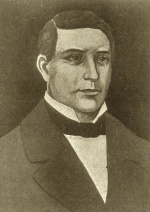
Jos Montferrand, Legendary Figure of the Ottawa Valley
Joseph Montferrand, dit Favre, better known as Jos Montferrand, is still considered one of the greatest figures of French Canadian legend. The hero is referred to by many different names across North America, including Montferan, Muffraw, Mouffreau, Mufferoin, Maufree and Murphy. While he is closely associated with the Ottawa Valley, this lumberjack, log driver, foreman, raftsman and strongman was not born and raised there. He did, however, spend half of his life in the region, drawn by the forest industry that proved to be the economic force of the Ottawa Valley in the 20th century. It was also in this region that he became a character of legend; today, there is no way to distinguish his real exploits from those that are purely folklore.
-
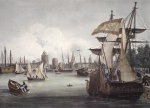
La Rochelle and French North America
La Rochelle’s history is the history of its various ports, which manifest La Rochellers’ ability to embrace the changing dynamics of the Atlantic seaway in the 12th through the 18th centuries. La Rochelle’s early involvement in the great discoveries and its commerce with the Americas and the rest of the world—determined by the whims of colonial shipping companies and economic opportunities—established this port town as one of the major seaboard towns of the Atlantic realm. La Rochelle’s story goes way back! It is not surprising to find, in La Rochelle and the surrounding territory (greater La Rochelle today boasts a population of nearly 150,000) and in the urban landscape of the old town, the traces of the French adventure in North America—an adventure of Franco-Quebecois cooperation that continues to this day in many forms.
-

La Troupe du Jour, Saskatoon’s Professional French-Speaking Theatre Company
As its first French-speaking communities began to be established, Saskatchewan's first French-Speaking theatre company emerged at the beginning of the 20th century. But it has only been since 1985 that the province has had its very own professional French-speaking theatre company. La Troupe du Jour has taken upon itself to become a centre of artistic creativity in Western Canada. As a result, the group played a major role in the creation of a community of Fransaskois artists. Over the course of its existence, the company has staged a number of original works, as well as classics taken from the vast repertoire of French language literature. In 2003, La Troupe du Jour was inducted into the Margaret Woodward Theatre Hall of Fame.
-
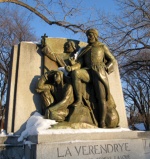
La Vérendrye: Archetypal Ideal of the Voyageur
La Vérendrye is one of the key explorers who left his mark on the history of New France. He remains one of the great emblematic figures of Western Canada, largely due to the fact that he was the first voyageur to reach the region of present-day Winnipeg. In Manitoba, his memory is especially honoured and celebrated in commemorative festivities, cultural events and the arts. These celebrations highlight the fact that the French have been present on the Prairies since the days of the Discoverers. In the eyes of many, La Vérendrye epitomizes the archetypal voyageur. He is a symbol of courage and the spirit of adventure, qualities deeply rooted in the mentality of the French, Métis and English voyageurs, who gradually settled this part of North America.
-

Lac-Saint-Jean «Tourtière»
Tourtière [a specialty meat pie from the Lac-Saint-Jean region] is undoubtedly the dish that is most emblematic of the Province of Quebec. Although it is less a part of the daily diet today than in previous decades, it is still served and enjoyed on special occasions-particularly during the holiday season. Nonetheless there is an ongoing debate between those who consider the Lac-Saint-Jean recipe as the only authentic tourtière and those who consider the tourtière to simply be a modest-sized dish that closely resembles the traditional meat pie. In fact, the typical Lac-Saint-Jean tourtière consists of a rolled-dough bottom crust placed in a large relatively deep casserole dish which is then filled with pieces of meat and sometimes potatoes and finally covered with a dough crust. The "tourtière/meatpie", on the other hand, is a much simpler dish composed of a top and bottom crust filled with a ground beef preparation. Despite their differences, these two versions of the tourtière share a common origin that goes back quite a long ways. Over the centuries, the two types of tourtière have often crossed paths, thereby creating a strong Quebec culinary tradition.
-
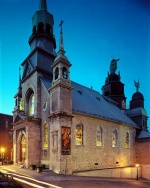
Marguerite Bourgeoys Museum and Notre-Dame-de-Bon-Secours Chapel
Marguerite Bourgeoys played a key role in education in Quebec, founding the Quebec chapter of the Congregation of Notre-Dame, a community of non-cloistered women dedicated to education that still is active around the world to this day. Sister Bourgeoys left another lasting mark on Quebec's tangible heritage: Notre-Dame-de-Bon-Secours, a pilgrimage chapel dating back to the mid-17th century. This shrine dedicated to the Virgin Mary is the oldest historic site in Montreal to have maintained its original function as a destination for pilgrims. The site's heritage is proudly displayed at the Notre-Dame-de-Bon-Secours Chapel/Marguerite Bourgeoys Museum complex founded in 1998.
-

Marie de l’Incarnation Memorial Sites in Tours
Marie Guyard, better known as Marie de l’Incarnation, was born in Tours, France. She lived there forty years, from birth in 1599 until she left for Canada in 1639. She is one of the pioneers of New France, where she founded the Ursuline convent at Quebec City, the first school for Indian and French girls in North America. She lived in this convent until her death in 1672. While she is well known in Quebec, her memory was almost forgotten in her native land, where only a handful of devotees, scholars and city councillors remembered this modest provincial woman of the seventeenth century, who left for Canada’s “few acres of snow”. However, since the 1950s, thanks to the tireless efforts of a group made up of Canadians and Tourangeaux, supported by a few elected officials aware of the influence of the French language in North America, the memory of Marie Guyard is finally receiving the attention it deserves in Tours.
-

Maurice Richard, the Hockey Player (part 1)
In becoming the greatest hockey player of his time, Maurice Richard also became a hero for all French Canadians. Following the riot provoked by his suspension in 1955, he developed a following that worshiped him to the point of creating a legend. The series of events that made him a hero coincide with the ever-changing values arising within Quebec and Canadian society. It is important to note that Richard's rise to greatness and celebrity status would not have been possible if it were not for his incredible athletic ability and sporting accomplishments. His great achievements, coupled with a particularly unique social context forged his status as a hero.
-

Maurice Richard, the Legendary Figure (part 2)
Maurice Richard (1921-2000), the hockey player, was much more than just another run-of-the-mill athlete. Nicknamed ‘The Rocket', the celebrated Number 9 of the Montreal Canadiens, has been written up in all kinds of media: magazine articles and scholarly texts, biographies and souvenir collections, short stories and folk-tales, novels and children's literature, poems and plays. Songs, comic books, sculptures, paintings, films, and television shows have also been dedicated to him. His portrait has appeared on articles of clothing and toys, as well as in all sorts of advertising. Public places have been named in his honour, for without a doubt, Maurice Richard is a Quebec legend.
-

Menaud Maître-draveur
The French writer Gustave Flaubert (1821-1880) said "I am Madame Bovary". Similarly, the Quebec novelist and poet Félix-Antoine Savard (1896-1982) could have seen one of his characters as describing himself. As a matter of fact, Félix-Antoine Savard often allowed himself to be called "Menaud" by his friends without being bothered in the slightest. In Quebec French-languag eliterature, rarely has a character been so closely associated with its creator and even less frequently has such a character's presence been so overshadowed the author's life's work. In fact, with the exception of the novel Menaud, maître-draveur (first edition printed in 1937) the other works of Félix-Antoine Savard remain relatively unknown. The story and the legend of the main character often overlap and, as far as popular lore is concerned, Menaud might have been a real person. Over the years, people have understood this mythical, fictitious character in a wide variety of ways; whether he is interpreted from a social, cultural, political or even environmental point of view-and today he even plays a role in Quebec tourism.
-

Mid-Lent Traditions in Acadia
The Mid-Lent celebration remains a vibrant living tradition in several Acadian regions of Eastern Canada. In Cheticamp and Saint Joseph du Moine on Cape Breton Island, in Fatima on the Magdalen Islands, and in Natashquan and Pointe-Parent in Quebec's Côte Nord region, the annual Mid-Lent outing is a rich tradition that has survived since the arrival of the first settlers. On Prince Edward Island, in the Tignish and Palmer Road parishes, a number of families have kept alive another tradition: the annual visit of the mysterious Mi-Carême [Mid-Lent] a mythical [female] figure who brings sweets to well-behaved children. These communities have maintained traditions of French origin formerly known throughout Acadia as well as in a number of regions of the Province of Quebec.
-

Migration and the French Language in Nova Scotia: A Recent Portrait
Over the course of its history, the population of Nova Scotia has grown increasingly diverse, both from a linguistic and cultural perspective. Without going into the details of this trend, suffice to say that French is a minority language in Nova Scotia today, spoken by only 3 to 5% of the province’s total population. Moreover, the French-speaking population is far from homogenous, since one in four francophones was born outside the province. This linguistic diversity—the result of the comings and goings of people who have settled in this part of Atlantic Canada—represents an unprecedented heritage worth preserving and promoting for future generations.
-

Mont-Mégantic International Dark Sky Reserve
The Mont-Mégantic region was recognised as the first international dark sky reserve in September of 2007 by the International Dark Sky Association. The certification recognises leadership of the region in regards to the preservation and restoration of the darkness of the starlit sky, which is one of the region's main natural treasures. The ASTROLab, observatory and the Parcs Quebec united their efforts to set up a dark sky reserve project, which included an awareness campaign, the adoption of regulations in 34 municipalities and an ambitious program to reduce light pollution, in order to preserve the quality of the night sky in the region. The project ensures that research, education, and tourist activities at Mont Mégantic will continue, thanks to the effective control of light pollution. The region currently preserves an official piece of scientific, cultural and environmental heritage.
-

Montmorency Park
Montmorency Park (le parc Montmorency) is located at the top of the Côte de la Montagne, near the Bishop’s Palace and the Old Post Office. It was designated a national historic site in 1949 to commemorate one of the places where the Assemblée législative of the Canadian province met between 1841 and 1866, an important milestone in the history of democracy in Canada. Other events and buildings have enriched the past of this spot, which has been in turn a sacred place where pioneers of New France were buried, a place of religious and civil power, and a strategic military site. Montmorency Park has been the scene of major historical events.
-

Morrin Centre
The Morrin Centre is an English-language cultural centre in Quebec City. Its history illustrates changes in relations between the city's French and English speakers over the past two centuries. The neo-Palladian building is a national historic site of Canada, having once housed a city prison, a Presbyterian-run college, and the oldest learned society in the country. Over the past few decades, the building has taken on symbolic importance for many in the region's English-speaking minority, who have spearheaded projects to preserve and develop it.
-

Mount Royal Park, a Precious Natural and Cultural Heritage
Between the Laurentians and the Appalachians, the St. Lawrence Plain is punctuated by a series of hills extending from east to west. These Monteregian Hills, as they are known, were formed by intrusions of molten magma over 100 million years ago. One of them, Mount Royal, dominates the largest island of the Montreal archipelago, right in the heart of Quebec's biggest city. This remarkable urban park is subject to equally remarkable protection and enhancement measures. Exploring the mountain’s rich, multifaceted heritage is a perfect way to reconnect with the natural and human history of Montreal and appreciate the charms of its natural and human landscapes, a testimony to ongoing efforts to balance nature and culture.
-

Mount Royal: The Importance of Civic Engagement
Mount Royal is part and parcel of Montreal’s history and identity. Dominating the city, “the mountain,” as Montrealers affectionately call it, has traditionally been—and continues to be—a geographical landmark and heritage symbol melding nature, culture and history. At 232 meters in height, the small Monteregien Hill named by Jacques Cartier in 1535 in honour of the King of France, and coiffed with a cross by de Maisonneuve in 1643, has long held a special place in the hearts of Montrealers. Their indefatigable efforts to protect it over the past 150 years testify to its powerful defining influence. And their civic engagement also bears witness to the key role that the public can play in preserving and promoting our collective heritage.
-
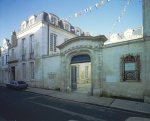
Musée du Nouveau Monde, La Rochelle, France
Housed in a magnificent 18th century private residence, Musée du Nouveau Monde’s collections tell the story of France’s relations with the Americas as conducted from La Rochelle, one of the main ports of New World trade and migration. Paintings, engravings, old maps, sculptures, furniture and decorative art objects conjure up images of Canada, the West Indies, and Brazil as well, with records of the transatlantic slave trade. A section is also devoted to the indigenous peoples of North America and the Far West.
-
Nuit sur l’Étang: a Nocturnal Frenzy of Franco-Ontarian Partying
In March of 1973, a few students from Laurentian University in Sudbury (Ontario), under the supervision of Professor Fernand Dorais, organized an event showcasing a variety of artists to be held at the end of the conference. A number of Franco-Ontarian musicians, performers, and poets took to the stage of the Fraser Auditorium to provide a memorable evening of entertainment. And so, Nuit sur l'Étang [A Night at the Pond] was born. More than 35 years have passed since that first night, yet the event still attracts a regular audience. In spite of many difficulties and changes over the years, Nuit sur L'Étang has continued to pursue its original goal of showcasing up-and-coming artists, while offering Franco-Ontarians an occasion to celebrate. On one evening a year, people from all over the province rally together to celebrate what has been called the "collective Franco-Ontarian frenzy." (NOTE 1)
-

O Canada: From French Canadian Patriotic Song to National Anthem
Every country has a national anthem, and Canada—with its O Canada—is no exception. National anthems are symbols meant to bring people together, crystallizing their sense of belonging and collective identity. Played or sung at official ceremonies and on solemn occasions, they are supposed to encapsulate what is best in a country or nation. That, in theory, is their purpose. But the destiny of an anthem may change over time to reflect transformations in a country or nation. Such is the surprising story of O Canada. A French Canadian patriotic song before becoming Canada’s national anthem, it is a fixture at sporting events like professional hockey games and the Olympics, yet opinion is still divided on its importance as a symbol of identity. Today, the role of this 19th century song remains the subject of debate and reconsideration.
-

Old Prison of Trois-Rivières
Located in downtown Trois-Rivières, the Old Prison opened in 1822 and was one of only a handful of historic buildings to survive the great fire of 1908. The prison’s age, architectural and historical significance, renowned architect, and long service in its original function all influenced the Quebec government’s 1978 decision to name the building a historic monument. The Old Prison is at once the architectural embodiment of a period of innovation in prison design that swept over Quebec in the early 19th century and a monument to the hardships of prison life experienced by generations of inmates between 1822 and 1986. Today visitors to the prison, now part of Musée québécois de culture populaire, can enjoy a one-of-a-kind experience known as “Go to jail!” which puts them in contact with former prisoners willing to share their experiences.
-

Old Quebec, a UNESCO World Heritage site
Old Quebec, a historic district of Quebec City, was inscribed on UNESCO’s World Heritage List in 1985. At that time it was characterized as “the cradle of the French civilization in America”, a “fortified city” and “always animated”. As the administrative centre of New France, governing a territory that spanned almost a third of North America, the city of Quebec served as headquarters for civil, judicial and religious governance under the French regime. Despite attacks, battles, regime changes and the ups and downs of economic life, Quebec City has maintained its role as capital, preserved its vitality or restored it during more difficult times, and protected and developed its heritage. Because the people living and working there consider its heritage to be their own, Old Quebec is an excellent example of a living urban heritage environment that continues to evolve.
-

Orléans: A Franco-Ontarian Suburb
In a mere forty years Orléans has gone from an overwhelmingly French-speaking village to a suburb of Ottawa where scarcely one-third of the population has French as its mother tongue. Nonetheless, the French presence remains vibrant and local francophones are exceptionally dedicated to preserving their language and culture and building on their achievements. No other place in Ontario boasts cultural programs and facilities like those that serve Orléans’ francophone community. The fight twenty years ago to have the provincial government spell “Orléans” with the accent on the “e” is an eloquent example of the community’s determination to stand up for its rights with regional and provincial authorities.
-

Ottawa Through the Eyes of Franco-Ontarian Writers
Ottawa may be Canada’s capital, but it is a much smaller city than Montreal or Toronto, both of which once vied to take its place. As a smaller centre, it also garners less attention in Franco-Ontarian literature—less than Toronto, Montreal, or even Quebec City. Despite this, Ottawa has carved out a respectable niche, often as a target of gentle irony, if not outright satire. Such, at least, is the portrait that emerges from the writings of various journalists, novelists and short story writers over more than a century.
-
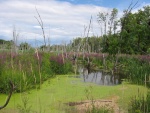
Parc national d’Oka, a natural heritage site
Parc national d’Oka not only contains Calvaire Hill, an important historical site, but is itself is located in an exceptionally rich natural environment. The geography and geology, the fauna and flora of this area have fostered human activity since prehistoric times. Efforts to protect the present territory of the park began in the early 1960s, with the creation of the Deux-Montagnes hunting and fishing reserve, soon renamed Parc provincial d’Oka, then Parc national d’Oka. This territory now covers 23.7 square kilometres and includes several ecosystems, which are the object of ongoing scientific study. This park, a sanctuary for Laurentian flora and fauna, shows the remarkable biological and geomorphological diversity of southern Quebec.
-
Parc national de Miguasha
Parc national de Miguasha is one of the world’s most prestigious fossiliferous sites. Thousands of fossils of fish, plants, and invertebrates some 380 million years old have been discovered there. UNESCO added this natural site on the Gaspé Peninsula to its World Heritage List on 4 December 1999. But well before being recognized as a world treasure, this site had long been a part of the daily life of the inhabitants of Miguasha who collected fossils. Indeed, these people were tremendously helpful to the scientists who began to appear in their region at the beginning of the 20th century. Scientists still take an active interest in the site, and the park’s team of paleontological researchers continue to gather new specimens from the now-famous cliff. Some of these marvellous fossils are on display in the permanent exhibition of the Miguasha Museum of Natural History located on the very site where they were discovered!
-
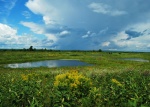
Parc National de Plaisance
By creating Parc National de Plaisance on March 22, 2002, the Quebec government took steps to protect and present not only a representative sample of the Saint Lawrence Valley lowlands, but an area renowned for its wealth of plant and animal life. The park, located on the site of Louis Joseph Papineau’s seignory on the banks of the Ottawa River, is surrounded on all sides by farmland and human settlements. This veritable oasis notable for its wetlands is one of the jewels of Quebec’s natural heritage.
-
Parc national du Mont Tremblant
The wildnature of Parc National du Mont-Tremblant [Provinical Park] draws visitors to the region year-round. With mountains, 400 lakes, six rivers and stands of fir and pine trees as far as the eye can see, the 1,510-km2 [583 square-mile] park features broad scenic vistas of Laurentian landscape. From the time it was founded as a forest reserve in 1895 and when it was finally recognised as a national park in 2001, the park has been subject to several changes over the years, whether it be to its boundaries or its land use. Throughout the park's history, the use of its forests and wildlife has reflected the evolution of the cultural and economic values of the society that created it.
-
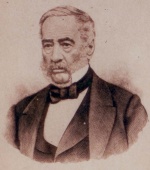
Philippe-Aubert de Gaspé, Author of Les Anciens canadiens, at Musée de la mémoire vivante
In 1863 Philippe Aubert de Gaspé published Les Anciens Canadiens, a novel of manners situated around the time of the Conquest in 1759. His work conveyed to future generations the memory of a way of life already in its dying days. Aubert de Gaspé’s novel was a smashing success, not only during his own lifetime, but also well beyond. Critics have consistently praised the book, considered a Quebec literary classic. Some of the many epithets bestowed on the author include “first historian of popular traditions,” “first memorialist of the British regime” and “chronicler of the elite and historian of popular traditions.” The Aubert de Gaspé Manor, as much a symbol of Les Anciens Canadiens as the author himself, was rebuilt in 2008, nearly a century after it was ravaged by fire. It now houses a museum that carries on the work of its former owner.
-

Place-Royale: Where Quebec City Began
Place-Royale in Quebec City is a historical and archaeological site unique in North America. Considered the birthplace of French America, it played a major role in the social and economic development of the French, and later English, St. Lawrence River colony between the 17th and 19th centuries. Beginning in the 1860s, competition from the Port of Montreal led to the decline of Quebec City’s port and, by extension, the Place-Royale district. In the 1940s, its state of dilapidation prompted plans for an ambitious reconstruction project that was completed in the 1970s and 1980s to restore its French colonial character. Archaeological excavations and historical research conducted during this period revealed the extraordinary heritage value of America’s first French city centre.
-

Private French-language Radio in Manitoba
Not enough attention has been paid to the struggle to develop French language radio in Manitoba and the resulting victory. Nevertheless, these efforts constitute an important and necessary step towards the preservation of French culture in Manitoba. French-language radio was an important milestone for the defence, development and affirmation of Franco-Manitoban identity. Thanks to initiatives such as this one, the French-speaking people of Manitoba were able to preserve their cultural and artistic heritage despite the daily overwhelming onslaught of English on radio.
-

Quebec Beer, Brewers and Breweries
Beer is the most popular alcoholic beverage in Canada and Quebec. Beer drinking as a tradition dates back to the days of New France, making brewing one of the oldest trades practiced in the Lawrence Valley. However, both brewing practices and the popularity of beer underwent significant changes, as the British tradition began to have a strong influence on the beer industry through the establishment of the first large-scale modern-day brewery, the Molson Brewing Company. The Industrial Revolution made it possible for beer to become a mass-produced commodity, brewed and bottled in factories and distributed by increasingly sophisticated infrastructures. Nowadays, microbreweries have revived the practices of artisanal brewing, as a number of festivals celebrate the many varieties of this ancient beverage.
-

Quebec City’s Cantilever Bridge
The Pont de Québec [Bridge] has left its mark on the history of transportation and engineering in Canada. It is the world's longest cantilever bridge, with 549 metres of clear span between its main pillars; it exceeds the Firth of Forth Bridge near Edinburgh, Scotland, by 28 metres. At the beginning of the 20th century, the promoters of the Quebec Bridge project described the endeavour as the future eighth wonder of the world, particularly because its construction represented such a colossal challenge for the era. In fact, this feat of civil engineering was accomplished with great difficulty, and that, only after decades of expectation and two unsuccessful attempts that caused the death of 89 workers. The Quebec Bridge was, at last, successfully completed on September 20th, 1917, as over 125,000 spectators watched enthusiastically. Today it is considered as a world-class engineering masterpiece and has been designated as an International Historic Civil Engineering Landmark and a National Historic Site of Canada.
-

Quebec’s Flag, the Fleurdelisé
Between the end of the Troubles of 1837 and 1838 and the Second World War, French Canadians usually flew the blue, white and red tricolor flag of France, which to them best represented their distinct character. But at the turn of the nineteenth and twentieth centuries, francophones began to call for a flag of their own that would be more in accord with their North American identity. A number of designs submitted from 1901 to 1905 helped lead the way to the present flag, particularly the Fleurdelisé of Father Elphège Filiatrault and the Carillon Sacré-Cœur. Finally, on 21 January 1948 the Fleurdelisé as we know it today became the official flag of Quebec. Since then it has been a strong symbol of Quebecois identity, flying over the official buildings of Quebec and in front of many private residences, or proudly raised by the people in various circumstances, particularly at important historical moments.
-

René Richard, Landscape Painter
René Richard (1895–1982) is remembered as a remarkable and charming man who followed his passions. He spent the first half of his life in search of himself, surviving in the wilderness in harsh conditions. Richard’s father had emigrated from Switzerland to settle in Alberta, but Richard chose a nomadic existence among the Cree and Inuit in Canada’s North. All alone in these wide empty spaces, Richard became an artist. In 1927, he decided to study painting in Paris, where he met Canadian painter Clarence Gagnon. Upon his return to Canada in 1930, he again took up trapping, this time in Manitoba, before finally settling in Baie-Saint-Paul where he spent the rest of his life, painting the luminous, brightly-coloured landscapes of the Charlevoix region in a style halfway between traditional figurative painting and the emerging Quebec expressionism of the 1950s. Richard’s work shines a light on many aspects of Canada’s natural landscape and social history and represents a major contribution to Canadian art.
-

Robert Cavelier de La Salle
In United States, La Salle is usually considered the greatest of the French explorers in North America. When history was taught in American classrooms primarily as that nation's heroic chronicle of expansion, his name was inevitably listed with others - Henry Hudson, Coronado, Ponce de Leon - whose careers dramatized that expansion. His memory was honored by having an American car named after him, along with other individuals from the colonial period, such as Pontiac, De Soto, Cadillac. However it is the historical writing of Francis Parkman, portraying La Salle in heroic light, that has been most influential in fixing his identity and meaning in North American consciousness. La Salle - identified in popular history as the first man to travel the length of the Mississippi - is a historical personality whose contribution to the European conquest and development of North America will never be eradicated from our collective memory.
-

Royal 22e Regiment
The Royal 22e Régiment (R22R) is one the three infantry regiments of Canada's Regular Armed Forces that has its headquarters in the Citadel of Quebec City. It is a French-speaking regiment that is composed of five battalions, of which three are in the Regular Armed Forces and two are part of the Reserve Forces. The regiment took part in all major conflicts in which Canada was involved since World War I; from the peacekeeping missions of the United Nations to the campaign in Afghanistan. Today, its rich history and heritage, both tangible and intangible, is being promoted in various ways in the very heart of Quebec City.
-

Royal College La Flèche, Wellspring of Missionary Zeal
A number of key figures from the early days of New France and Acadia either studied or taught at the Jesuit college in La Flèche. Notable figures include François Montmorency de Laval, first bishop of New France; Jérôme Le Royer de la Dauversière, the visionary behind the founding of Montreal; and several Jesuit missionaries, among them Canadian martyrs Isaac Jogues and Gabriel Lalemant. In the 18th and 19th centuries, the college, whichis located in the former French province of Anjou, set itself clearly apart from the other institutions training missionaries bound for America, thereby playing a key role in the missionary history of New France and Acadia and inthe creation of the Canadian Catholic Church.
-
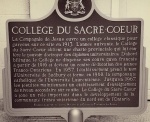
Sacred Heart College, Sudbury
An Ontario Heritage Trust plaque at the corner of Notre-Dame and Kathleen streets in Sudbury marks the location of Sacred Heart College. Thousands of students passed through the college doors over the years, with many going on to become leaders who left their mark on the Franco-Ontarian community and beyond. The English plaque reads as follows: “The Society of Jesus opened a classical college at this site in 1913. The next year the province granted Sacred Heart College a charter giving it degree-granting powers. At first the college was bilingual, but after 1916 it taught exclusively in French. Sacred Heart College became a centre for the education and formation of young Franco-Ontarian men. In 1957, it changed its name to the University of Sudbury, which became the Catholic component of Laurentian University in 1960.” Sacred Heart College played a crucial role in the flowering of French Ontario’s collective identity and memory. It was here that Société historique du Nouvel-Ontario (SHNO) was founded in 1942. Today, this important heritage organization keeps local history alive with its archival collection, conferences and publications.
-
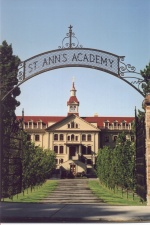
Saint Ann’s Academy in Victoria (British Columbia)
In the heart of English-speaking Victoria, the capital of British Columbia, there is an architectural jewel constructed in a magnificent classical style evocative of the serenity of a Quebec convent. Designed by a French Canadian from Quebec, Friar Joseph Michaud, and built under the supervision of a Montreal architect, Saint Ann's Academy was, for more than a century, the West-Coast Mother House of the Sisters of Saint Ann. This establishment was committed to educating young girls, offering such high-quality instruction that young women from all over the world came to Victoria with the express purpose of studying at the institution. After the Academy had to close its doors in 1973, primarily due to financial reasons, the government bought the building and made it into a Heritage Site, which now open to the public. Even though Saint Ann's Academy was long an English-language institution, its very existence is a reminder of the former presence and influence of the French Canadians in the history of education in British Columbia.
-

Saint-Jean-Baptiste Society Network: from French-Canadian Unity to Quebec Nationalism
The Réseaux des Sociétés Saint-Jean-Baptiste [Network] has always been at the front lines of the various movements for claiming and affirming French Canadian identity and language rights (and more recently those of French-speaking Quebeckers) . Founded in 1854, this network, which is an offshoot of the Montreal Saint-Jean-Baptiste Association, has helped to forge the legends and symbolism associated with the shared history of French-speaking North Americans, a group that includes not only communities of Canadian origin, but also groups composed of U.S. Acadian emigrants. The Network has held a leadership role in political, cultural and social circles for over 150 years. This is why the history of the network can be considered as being synonymous with the identity discussions that have marked the past of the various French-speaking communities in North American, particularly because the Society has played a key role in the development of French-Canadian heritage.
-
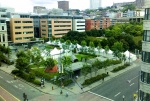
Saint-Roch: Quebec City’s Urban Core is Reborn
Saint-Roch began its life as a working class quarter, the first outside Quebec City’s walls. For many years the most prosperous and populous part of the city, it was also home to much of the francophone community. From the mid 19th century to the late 1950s, Saint-Roch was Quebec City’s commercial, industrial and manufacturing centre. Today, with its rich architectural heritage and creative, resourceful population, Saint-Roch is the living legacy of four centuries of urban history, a testimony to the massive effort to save, restore, and bring new life to the city’s urban core.
-
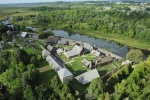
Sainte-Marie-among-the-Hurons: a little-known gem of “Ontario’s New France”
The historical site Sainte-Marie-among-the-Hurons located on the Wye River (originally named Isiaragui in the Huron language), which flows into Georgian Bay, proudly stands as a living testimony to one of the most dramatic chapters of the history of New France. The modern reconstruction of the twenty-two buildings surrounded by a palisade that bring to life the ten years of this fortified Jesuit mission’s existence (1639-1649) constitutes a strange paradox. The meeting of two of Canada’s founding peoples, the Wendat (or Huron) and the French, that resulted in tragic consequences, is commemorated in an area that is very anglophone, by an English-language organization, Huronia Historical Parks/Parcs historiques de la Huronie, which has a few francophone and bilingual staff members. Nevertheless, this historical site located in the heart of Ontario remains a gem of Canada’s French heritage stretching back to the country’s very beginning.
-

Tadoussac between Forest and Sea
Tadoussac, lying at the confluence of the Saguenay and Saint Lawrence rivers, possesses a rich natural and cultural heritage. Originally a site for trade between Amerindian nations, it was later frequented by Basque, Breton and Norman fishermen. Its first permanent settlements were built in the first third of the seventeenth century. Tadoussac became New France's most important port, and the main trading post of the huge Domaine du Roi. Later, with industrialization and development of the region, its economic and touristic value grew. With its magnificent countryside, natural resources and history, Tadoussac makes its mark on land and on sea, as seen by the numerous heritage events still taking place today.
-

The Acadian Games and the Growth and Development of the Acadian Community
The year 1979 was a significant one in Acadia: not only did the nation celebrate the 375th anniversary of its founding, but the famous Tintamarre – held on August 15th – was born and permanently established. In addition to that, two important social networks were created: the Conseil économique acadien – which will later become the Conseil économique du Nouveau-Brunswick – and the Jeux de l'Acadie. As Daniel O’Carroll wrote in 1993, these represent “the most popular annual event and one of the greatest achievements of modern Acadia.” Indeed, the Jeux represent a wonderful opportunity for Acadians of all ages to learn and excel. The Jeux were a major factor in the development of a modern Acadia full of talents and achievements.
-

The Cercle Molière: for the Love of Theatre in French
Every year without fail, since 1925, the Cercle Molière [Molière Circle] has presented theatre in French in Winnipeg, Manitoba. The Circle is recognized as Canada's oldest theatre company of any language and represents one of the finest French culture treasures that has roots in Western Canada. Originally operated by passionate amateur theatre lovers, the Circle is now a professional company. It offers a program for adults and another for younger audiences, as well as providing training sessions in the dramatic arts. The Circle is a major monument to local heritage and is a key player on Manitoba's French-language arts and culture scene. It has always been a rallying point for the energies of the Franco-Manitoban community, which has often helped it overcome the many obstacles that it has had to face.
-

The Clergy and the Origins of Quebec Cinema: Fathers Albert Tessier and Maurice Proulx
A handful of priests were among the first people in Quebec to use a movie camera. They were also among the first to grasp the cultural significance of cinema. Two individuals are particularly significant in this regard: Fathers Albert Tessier and Maurice Proulx. Today they are widely recognized as pioneers of Quebec cinema arts. Since 2000, Quebec cinema has been experiencing renewed popularity. Nevertheless, the key role played by the clergy in the development of a cinematographic and cultural tradition before the Quiet Revolution of the 1960s has not been fully appreciated, even though they managed nothing less than a collective heritage acquisition of cinema during a period dominated by foreign productions. After initially opposing the cinema-considering it an "imported" invention capable of corrupting French-Canadian youth-the clergy gradually began to promote the showing of movies in parish halls, church basements, schools, colleges and convents. It came to see film as yet another tool for conveying Catholic values.
-

The Criée des Âmes in L’Islet-sur-Mer
A custom dating back to the French Regime, the Criée des Âmes, or “All Souls Auction,” is a practice rooted in both religious and folk traditions. Originally, proceeds from these auctions were used to pay for masses to free souls from purgatory. Nowadays, the event is an original fundraising activity that helps Quebec parishes pay for church maintenance. A Criée des Âmes has been held every year since 1980 in L’Islet-sur-Mer, a town in Quebec’s Chaudière-Appalaches region. The ceremony also provides a special opportunity to revive time-honoured local cultural traditions, like berlot sleigh rides, sleigh drivers dressed in capots de chat (raccoon coats), and bowls of chiard blanc, a favourite local dish.
-
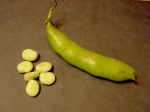
The Cultural and Culinary Voyage of the “Gourgane”
The broad bean or fava bean goes by the name “gourgane” in the Charlevoix and Saguenay–Lac-Saint-Jean regions. This bean has a long history, and was once a common staple in the diet of the inhabitants of New France. Long associated almost exclusively with the Charlevoix region, especially since the late 19th century, it has been virtually forgotten elsewhere, except in Saguenay-Lac-Saint-Jean region. It was introduced there by settlers from Charlevoix starting in 1838 and is now grown as a commercial crop. Despite the legume’s remarkable nutritional value, it is rare in the diet of Quebecois today. It is primarily known for its use in “soupe aux gourganes” (gourgane soup), a regional dish featured in traditional cooking in the Charlevoix, Saguenay, and Lac-Saint-Jean regions.
-

The Domaine Forget in Charlevoix
The Domaine Forget in Saint-Irénée of the Charlevoix region has acquired the most enviable status of a cultural institution of widespread renown throughout the Province of Quebec, across Canada and overseas. The site has gained recent notoriety largely due to the business initiatives of a certain Rodolphe Forget, a public figure that left a considerable impression on Quebec’s collective memory and impacted the region’s history. In 1901, Forget had a luxurious vacation home built on an estate acquired the preceding year, so as to be able to spend the summer with his family in the picturesque Charlevoix coastal village. In so doing, Rodolphe Forget established a substantial and symbolic foundation for what would become a prestigious institution. After having served as a private estate for quite some time and then, for over more than thirty years, as an institution of learning maintained by nuns, in 1978 the estate became the site of an academy and an international classical music festival. The humble early years of the Forget estate would, with time, gradually give rise to a renowned cultural institution equipped with a set of exceptional facilities that music lovers from across the nation and around the world would come to appreciate.
-
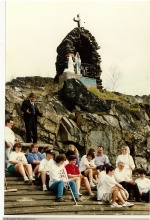
The Grotto of Our Lady of Lourdes of Sudbury
The cultural identity of Ontario'sFrench speaking population has always been closely tied to its religious heritage. Since the construction of the Grotto of Our Lady of Lourdes of Sudbury in 1907, the grotto has been an important religious site for prayer and religious gatherings for Northern Ontario's French language community. It is also considered to be one of Sudbury's historical milestones. Over the last hundred years, the grotto has undergone of many changes. There have been periods of considerable popularity, but also times when it has been neglected. Nevertheless, due to the efforts and care of many community members, the site has now regained its former importance as a site for community events and as an ecumenical place of worship.
-

The Heritage of Métis Language in Western Canada
The second half of the 18th century saw the emergence of two distinct communities in the fur trade territories known as the Pays d’en haut: the French-speaking Métis and the English-speaking Métis known as “halfbreeds.” Both communities were born of the unions of aboriginal women and white men. The French or English that Métis children learned from their fathers evolved over time to give rise to two local dialects: French Michif and Bungee, a vernacular form of English. But these children had also learned their mother’s aboriginal languages. They would create a whole new language, Michif, a remarkable blend of French, Cree and Ojibwa. Today, this remarkable linguistic heritage is threatened with extinction.
-

The image of Toronto in the work of Franco-Ontarian writers
Within a generation or two, the representation of Toronto in Franco-Ontarian literature was transformed, as the Ontario capital changed from a boring Anglo-Saxon city into a major multicultural one. In the contemporary novel in particular, the Queen City revealed an array of surprising and attractive aspects. It was in turn the city that Canadians love to hate, the rival of Montreal, the personification of government, the Canadian gay mecca, and the city with the longest street in the world.
-

The Lachine Canal and its Industrial Corridor
The corridor formed by the Lachine Canal and the surrounding area was recognized as a National Historic Site of Canada in 1996. The canal, which opened in 1825, allowed for the navigation of the tumultuous waters of the upper Saint Lawrence River, and played a major role in the development of the western part of the country. Its strategic position between the eastern and western portions of the Saint Lawrence led to the most diversified concentration of industrial establishments in the country. These factors also favored development of the Port of Montréal, making the city Canada’s first metropolis.
-
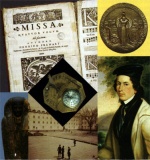
The Legacy of the Séminaire de Québec Collections: an Account of the History of French Speaking North America
Due to the quality of the items, literary works and documents included in the Séminaire de Québec Collections, they are considered to be one of Quebec’s most important body of museological collections. What makes these collections particularly unique is that they have been compiled and preserved by the same institution at the same location for over three centuries with the sole purpose of using the various objects and works as educational tools for training the French-speaking elite. These works, objects and documents — which were entrusted to Quebec City’s Musée de la Civilisation in 1995 and have remained there ever since — testify to the history and evolution of French culture in North America. These heritage collections from the Séminaire de Québec offer a unique perspective of the French cultural heritage of North America. This is why, since 2007, the archives of the Séminaire de Québec have been listed in the prestigious register of UNESCO’s Memory of the World Programme.
-

The Loto-Québec Collection of Quebec Art
For over 30 years Collection Loto-Québec has supported visual artists who live and work in Quebec by purchasing their work. In 2010 the Collection comprised 4,200 works from every region of Quebec in a wide variety of styles and media. Almost all are displayed in Loto-Québec workplaces and public spaces, or in museums and galleries throughout the province. In these diverse ways, Collection Loto-Québec makes a remarkable contribution to developing and sustaining Quebec culture in the field of visual arts.
-

The Motto of Quebec: “Je me souviens”
There was a time in the mid-20th century when Quebec schoolchildren capped off their weekly “flag salute” with a resounding “Je me souviens!” In those days, the provincial government emblazoned buildings, official communications and publications with its coat of arms, which bears the same motto. The Quiet Revolution spelled the end of the flag salute and saw the government replace the coat of arms first with the fleur-de-lis and then with a miniature Quebec's flag. But the motto returned to prominence in 1978 when the Lévesque government chose it to replace the La belle province slogan on the province’s license plates. Quebecois are thus daily reminded of their official motto—though they may not know its origins or understand its meaning.
-

The Origins of the Acadian Flag and National Holiday: the Memramcook and Miscouche Conventions
The ten Acadian national conventions—which took place between 1881 and 1937—still hold great significance today for people interested in Acadian cultural identity, history and heritage. These conventions are largely the foundation of what is modern Acadia today. The first two such events are of particular historical significance, since it was in Memramcook (1881) and then in Miscouche (1884), that the Acadians first asserted themselves as a people with a distinct national identity who were to be distinguished from the French Canadians. It was also then that they adopted national symbols which embodied their unique identity, including a patron saint, national holiday, flag and anthem. At the time, the Acadian elite hoped to unite the people around these symbols and rally the collective strength of the nation to engage in the struggle to obtain recognition of their fundamental cultural, political, social and language rights. These historic conventions were events that forged a major part of the Acadian cultural identity into what it is today.
-
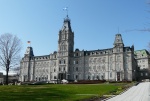
The Parliament Building of Quebec: A Place of Memory
Erected between 1875 and 1886, the Quebec Parliament Building stands as one of the finest examples of Quebec’s architectural heritage. Its craftsmanship and style evoke the past, present and future of a nation committed to democracy. And its imposing freestone façade, distinctive silhouette and interior design all bring to mind—as its architect Eugène-Étienne Taché intended—the French origins of this North American nation. The building’s east-facing façade, just a stone’s throw from the fortifications of the Old City, is adorned with a series of sculptures that hearken back to significant events and figures in the founding of Canada and Quebec. Carved above the main entrance is Quebec’s motto, “Je me souviens.” A reference to Quebec’s evolution since 1534, the motto actualizes political history and reminds observers that to this day the parliament is the seat of the people’s assembly and their elected government.
-

The Regional Festivals of Quebec
While Montréal is known as a hotspot for festivals, the same could well be said of Quebec as a whole. From their roots in the traditional country fair, festivals have spread throughout the province to become part and parcel of Quebec life and culture in hundreds of cities, towns and villages. About half of these popular gatherings are seasonal (like summer festivals or winter carnivals) while the rest showcase something more specific—cultural attractions, sports, or local identities and characteristics. In many regions these events strengthen community ties and drive development. Festivals are unquestionably a foundational part of Quebec’s intangible cultural heritage.
-
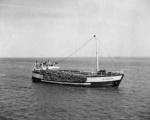
The schooner Saint-André, a jewel of the Charlevoix Maritime Museum
The schooner Saint-André was built in 1956 at La Malbaie, in Charlevoix County, by master carpenter Philippe Lavoie, one of the last schooner builders of the Saint Lawrence. Its owner, Captain Fernand Gagnon, engaged in coastal trading on the Saint Lawrence, mainly between Montreal and Sept-Îles, until 1976. At that time wooden schooners were replaced by metal ships, which were much larger, more profitable and better adapted to winter navigation. The Saint-André, one of the last witnesses to Quebec's particular long maritime tradition, was classified as a cultural property in 1978. Recently restored, it is conserved at the Charlevoix Maritime Museum, near the shores where it was born.
-

The suburbs and the bungalow heritage in the making
A wave of commemorations swept Quebec recently, as Quebec City celebrated its 400th anniversary in 2008 and Trois-Rivières and Gaspé respectively marked their 375th and 475th birthdays in 2009. Events like these are opportunities to celebrate our heritage and history. Yet even as we celebrate, a new heritage vision is emerging with a different focus: the suburbs and their typical dwelling, the bungalow.
-

Tintamarre: a New Acadian “Tradition”
Every year on August 15th, on the occasion of the Acadian national holiday, Acadians from the Maritime provinces hold a Tintamarre, a grand celebration in which people get together and march through their communities making an enormous racket with improvised instruments, in order to express their pride in their Acadian heritage. This practice has become symbolic of their identity, along with the three-coloured flag and the hymn Ave Maris Stella. It is an important component of the image promoted of Acadia outside the Maritimes. While the other symbols of Acadia originated as a part of the growing self-awareness that emerged during the second half of the 19th century, Tintamarre is different in that it is a relatively new phenomenon, dating back only to the end of the 1970s.
-

Toponymy of the Churchill River: a Legacy of the French-speaking Voyageurs
Over 347 kilometres (215 mi) long, the Churchill River is the location of multiple exceptional natural, cultural and historical heritage sites. In fact, there are so many important sites in the Churchill River Basin that it has been proposed as a candidate for the Canadian Heritage Rivers System. Churchill's history has been marked by the forays made by various voyageurs involved in the fur trade. They gave the Churchill waterway and the surrounding region all kinds of French names. These names testify to the veritable golden age of the French language in a region that would later come to be known as Saskatchewan.
-
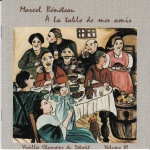
Traditional French Songs in Ontario
Traditional French songs remain the most dynamic and best-documented aspect of the traditional folklore of Ontario francophones. Not only is the number of songs collected and catalogued by folklorists impressive, but these songs also continue to be a part of family and community gatherings across French-speaking areas of the province. From the choruses sung by the early voyageurs, and then later the lumber jacks, to those heard at contemporary festivals today, traditional songs have always been a reflection of the historical factors that influenced how various areas of the province were settled. These songs, more than any other aspect of the oral tradition, have played a key role in expressing the cultural identity of Franco-Ontarians and form a key part of their collective memory.
-

True Portrait of Marguerite Bourgeoys
The post-mortem portrait of Marguerite Bourgeoys is the only surviving contemporary depiction of one of the most remarkable figures in the history of Montreal during the 17th century. Painted in 1700 by Pierre Le Ber, the work has been in the hands of the Congregation of Notre-Dame ever since and is currently exhibited at the Marguerite Bourgeoys Museum. During the 19th and early 20th centuries, the portrait was retouched several times, completely altering its appearance. The restoration of the painting in 1963-1964 revealed the true face of Marguerite Bourgeoys and the authentic work of one of Canada's earliest painters.
-
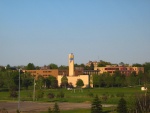
Université de Moncton
With over 180 programs of study and three regional campuses, Université de Moncton in New Brunswick is Canada’s largest French-language university outside Québec. Founded in 1963, the University is at the heart of the province’s Acadian and francophone heritage. It has awarded over 45,000 degrees since its establishment, contributing significantly to the community’s vitality and development. Its mission is not only educational, but cultural as well. Université de Moncton and its many affiliate organizations actively promote Acadian history, heritage, arts and knowledge, fostering Acadia’s vitality and enhancing its profile throughout the francophone world.
-

Van Horne Mansion (1870-1973): a Demolition That Changed the History of Heritage Preservation
Heritage enthusiasts looking for the Van Horne Mansion on rue Sherbrooke in Montreal will be disappointed. On the land where it was built during the middle half of the 19th century now stands a17-floor skyscraper. However, what is important about the Victorian-era home is not so much its material value, but rather the debate that surrounded its demolition in 1973. It was a moment that marked the city's transition to a modern metropolis and it changed the way people thought about their past and their future. It was a time that solidified the role of heritage conservation organisations and transformed people's idea of what constituted heritage in Quebec.
-

Vanier: French-Speaking Bastion in Ontario
Vanier began as a small village east of the Rideau River. Its real period of growth started in the mid-nineteenth century when the lumber trade led to the development of the Ottawa area. Working-class French Canadians settled there, making it one of the largest French-speaking areas in what would become the capital of Canada. Vanier developed quickly in the 20th century and, increasingly, it identified itself as the city’s main French-speaking bastion. While it did experience a difficult period after the Second World War, Vanier developed a cultural reputation and became a powerful symbol of Franco-Ontarian culture. Today, thanks to its many efforts to protect and showcase its heritage, Vanier is an important historical centre for the French-speaking population of the capital, as well as the province of Ontario.
-

Victoria Cross: French-Canadian Recipients
The Victoria Cross is a military decoration awarded for “most conspicuous bravery, or some daring or pre-eminent act of valour or self-sacrifice, or extreme devotion to duty in the presence of the enemy.” This British decoration was created during the reign of Queen Victoria. It constitutes the highest recognition attributed to soldiers or civilians serving in the armed forces of the British Empire and, subsequently, the Commonwealth. Three French-Canadian soldiers have received the Victoria Cross: Corporal Joseph Kaeble, Lieutenant Jean Brillant, and Captain Paul Triquet.
-
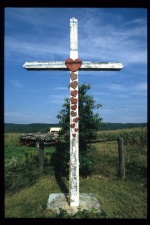
Wayside Crosses
Nearly3,000 wayside crosses are still standing along the highways and byways of theProvince of Quebec. They representa precious heritage-a legacy of the past. The first crosses were erected by Jacques Cartier as a symbol ofterritorial appropriation. Later,the pioneers used them to mark the founding of a village and French Canadianpeasant farmers (then known as habitants) did thesame upon staking their land claims. All sorts of reasons have led French Canadians to put up waysidecrosses: farmers set them up closeto their fields for divine protection; parish priests erected them to indicatethe site of a future church; parishioners raised them up on the halfway pointalong a concession or range road, where they would gather for the eveningprayer. Although wayside crossesare first and foremost religious objects, over time they have taken on a moreheritage-oriented significance, their distinctive outline characterising aparticularity of the Quebec countryside that has come to be associated with thefaith of the French Canadian forefathers.
Images
-

Reconnaissance des RH
SJ par la ville... -
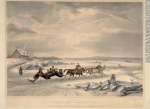
«Course de traîneaux
près de Montréa...Article :
Adapting to Winter: Transportation -
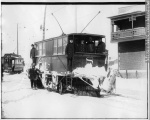
Chasse-neige électriq
ue, Montréal, Q...Article :
Adapting to Winter: Transportation -
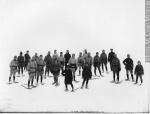
Groupe de raquetteurs
, Montréal, QC,...Article :
Adapting to Winter: Transportation
-

Champs de mars Montré
al 1830Article :
Alexis de Tocqueville’s visit to Lower Canada in 1831 -

La ville de Montréal,
vue de l'ouest...Article :
Alexis de Tocqueville’s visit to Lower Canada in 1831 -

La Fermière, sculptur
e d'Alfred Lali... -

Monument La Fermière,
oeuvre d'Alfre...
-

Barrage du moulin à p
apier de la sci...Article :
Arthur-Villeneuve House: a Testimony to an Artist’s Life and Work -

Compagnie de pulpe de
ChicoutimiArticle :
Arthur-Villeneuve House: a Testimony to an Artist’s Life and Work -

Montreal Bungalow
-

Montreal Bungalow 2
-

Armes et scènes de gu
erreArticle :
Baron of Lahontan -

Attaque de Québec
Article :
Baron of Lahontan -

Billet de Lahontan
Article :
Baron of Lahontan -

Boeufs sauvages
Article :
Baron of Lahontan
-

Calumet de paix qui e
st une grande p...Article :
Baron of Lahontan -

Canot des Iroquois d'
écorce d'ormeau...Article :
Baron of Lahontan -

Cérémonie de mariage
Article :
Baron of Lahontan -

Cérémonies au « Solei
l levant » et a...Article :
Baron of Lahontan
-

Combat entre deux vai
sseaux Anglois ...Article :
Baron of Lahontan -

Deux raquettes
Article :
Baron of Lahontan -

Étang à castors
Article :
Baron of Lahontan -

Frontispice des Nouve
aux voyages de ...Article :
Baron of Lahontan
-

Hiéroglyphes
-

Les troupes de Denonv
ille contre cel...Article :
Baron of Lahontan -

Scènes de chasse
Article :
Baron of Lahontan -

Au centre-ville de Mo
ntréal: l'églis...
-

Décor de l'autel de l
a basilique Not... -

Façade de la basiliqu
e Notre-Dame de... -

Façade de la basiliqu
e Notre-Dame de... -
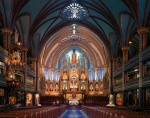
Intérieur de la basil
ique Notre-Dame...
-

Intérieur de la basil
ique Notre-Dame... -
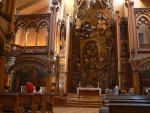
Intérieur de la basil
ique Notre-Dame... -

Intérieur de la basil
ique Notre-Dame... -

L'Église Notre Dame,
Montréal
-

L'église Notre-Dame à
Montréal -
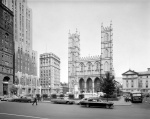
L'église Notre-Dame à
Montréal, 1964... -

L'immense bourdon de
la tour de l'ég... -

L'un des nombreux vit
raux de la basi...
-

L'un des nombreux vit
raux de la basi... -
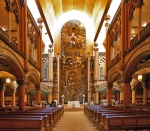
La chapelle Notre-Dam
e du Sacré-Cœur... -
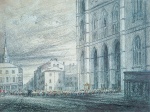
La place d’Armes et l
’église catholi... -
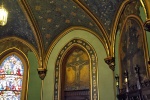
Le décor peint par Oz
ias Leduc dans ...
-
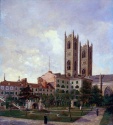
Le jardin du Séminair
e de Saint-Sulp... -
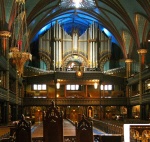
Le revers de façade e
t les grandes o... -

Montréal en 1832
-

Montréal vu de la tou
r de l'église N...
-

Montréal. L'église No
tre-Dame et une... -

Montréal. Rue St Sulp
ice et église N... -

Monument devant la ba
silique Notre-D... -
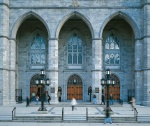
Portail de la basiliq
ue Notre-Dame d...
-

Terrasse d'observatio
n de l'église N... -
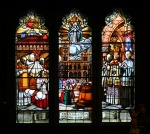
Vitrail (1930-1931) q
ui représente l... -

Vue, en arrière-plan,
de la basiliqu... -

Atelier de forge de l
a Canadian Car ...
Vidéos
-

Champlain
(Film muet) Ce film présente divers monuments érigés à la mémoire de Samuel de Champlain. Ceux-ci témoignent du rôle important qu’il a joué dans l’histoire de l’Amérique française. À Québec, lors du tricentenaire de la fondation de la ville (1908), près du Château Frontenac. On voit aussila réplique du bateau « Don de Dieu » et la reconstitution de l’Abitation de Champlain à Québec. À Saint-Jean, au Nouveau-Brunswick, une statue de Champlain souligne la découverte de l’endroit par Champlain en 1604. On assiste aussi à une cérémonie commémorative à l’île de Sainte-Croix, où Champlain a hiverné en 1604. Enfin, à Montréal, une statue de Champlain et plusieurs affiches commerciales rappellent le célèbre explorateur.
Article :
Champlain’s astrolabe: the journey of a mythical Canadian heritage object -
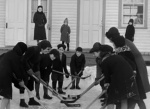
La passion du hockey à travers le Canada
(Film en partie muet) Ce film illustre de façon éloquente la popularité historique et la passion que soulèvent le hockey à travers le Canada. Une partie de hockey à Montréal en 1898; des enfants et des adolescents qui pratiquent ce sport en amateur sur les lacs, les patinoires extérieures, dans les cours d’école, à l’arrière des maisons, dans les arénas et les ruelles. On voit des extraits de plusieurs parties de hockey jouées à différentes époques et dans diverses régions du pays, en 1940 à l’école Saint-Paul l’Ermite, en 1954 au Maple Leaf Gardens, en 1969 en Nouvelle-Écosse, en 1984 à Montréal et à Banff en 2001, avec les Rocheuses en arrière-plan. Des images exceptionnelles.
Article :
Montreal Canadiens; a Religion -

Célébrations de Noël en ville
(Film muet) Ce film présente plusieurs évènements et préparatifs traditionnels de la période de Noël. On assiste au défilé du Père Noël en 1920, à la présentation des gnomes du magasin Dupuis et Frères qui fabriquent des jouets devant une foule d’enfants, ainsi qu’à la présence du Père Noël lors de fêtes familiales. On présente aussi la tradition de l’arbre de Noël, installé sur la rue Sainte-Catherine en 1946, dans le vieux Québec en 1990-1991 et à l’intérieur d’une maison familiale dans les années 1950. On voit également les décorations du magasin Simpson’s en 1946, celles de centres commerciaux de Montréal en 1971 et 1990, et de Shawinigan en 1994.
Article :
Christmas Celebrations -
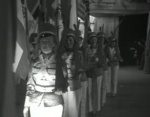
Fêtons Noël pendant la Deuxième Guerre mondiale
(Film muet) En 1942, à cause de l’absence des pères de famille partis à la Guerre, on présente un spectacle d’animation en présence de clowns, de mascottes et, bien sûr, du Père Noël, au Forum de Montréal, à l’intention des enfants des combattants canadiens. On voit ensuite un bref reportage présenté dans les cinémas, en début de programme, sur un défilé du Père Noël en 1943. Des chars allégoriques, des clowns, des fées, des soldats de plomb et le traîneau de reines transportant le Père Noël défilent dans les rues de Montréal entourés d’enfants enchantés et comblés.
Article :
Christmas Celebrations -

Visite de Charles de Gaulle en 1967
Le général Charles de Gaulle débarque à Québec le 23 juillet 1967 à l’occasion du centième anniversaire de la Confédération canadienne. Il visite divers endroits réputés de la région de Québec en présence d’une foule impressionnante. Le lendemain, il se rend à Montréal par le Chemin du Roy. Partout sur son passage, une foule nombreuse le salue et l’acclame. Arrivé à Montréal, le Général se rend à l’Hôtel de Ville où il fait sa célèbre déclaration : « Vive le Québec libre! » devant une foule évaluée à 15 000 personnes. Cet « incident diplomatique » provoque l’annulation de sa visite à Ottawa et le retour précipité du général De Gaulle en France.
-

Visite de Charles de Gaulle en 1967
Le général Charles de Gaulle débarque à Québec le 23 juillet 1967 à l’occasion du centième anniversaire de la Confédération canadienne. Il visite divers endroits réputés de la région de Québec en présence d’une foule impressionnante. Le lendemain, il se rend à Montréal par le Chemin du Roy. Partout sur son passage, une foule nombreuse le salue et l’acclame. Arrivé à Montréal, le Général se rend à l’Hôtel de Ville où il fait sa célèbre déclaration : « Vive le Québec libre! » devant une foule évaluée à 15 000 personnes. Cet « incident diplomatique » provoque l’annulation de sa visite à Ottawa et le retour précipité du général De Gaulle en France.
-

Dollard des Ormeaux
(Film muet) Ce film présente les célébrations commémoratives à Dollard des Ormeaux en 1941, en présence d’une foule considérable, devant le monument érigé à sa mémoire au Parc Lafontaine de Montréal : défilé militaire et cérémonie officielle en présence du lieutenant-gouverneur du Québec, Sir Eugène Fiset En 1942, on voit un défilé des Cadets de l’air et de militaires, hommes et femmes, dans les rues de Québec pour commémorer le combat que Dollard a livré aux Iroquois en 1660. En 1943, une autre célébration à caractère militaire et religieux agrémentée d’images de la population en congé dans le parc et sur le plan d’eau du Parc Lafontaine.
Article :
Dollard des Ormeaux -

Drapeau du Québec
(Film muet) On voit d’abord le Carillon-Sacré-Cœur qui a inspiré le drapeau actuel du Québec, que l’on voit ensuite dans différentes circonstances et à différentes époques, à partir de l’annonce faite par le Premier Ministre Duplessis lors de son adoption par l’Assemblée législative le 21 janvier 1948. Le drapeau flotte partout dans la province, de Montréal à Gaspé, sur terre comme sur mer, et même outre-atlantique, au sommet d'un immeuble de Paris près des Champs Élysées. Il recouvre également des cercueils lors de funérailles nationales.
-

La fête de la Saint-Jean-Baptiste
(Film muet) Ce film présente différentes célébrations de la Saint-Jean-Baptiste à Montréal. En1958, on assiste à un défilé de voitures conduites par des personnalités importantes, dont le Président de la Société Saint-Jean-Baptiste. En 1964, des centaines de personnes se rejoignent dans les rues pour célébrer et chanter devant le drapeau fleurdelisé illuminé et assister à des feux d’artifice. Un spectacle d’artistes québécois se déroule en présence d’une foule nombreuse, tout près d’un grand feu de joie en 1975. Le contraste est frappant avec les célébrations religieuses et militaires et diverses activités qui se déroulent dans un camp de l’armée canadienne en 1940.
Article :
Quebec’s Flag, the Fleurdelisé Saint-Jean-Baptiste Society Network: from French-Canadian Unity to Quebec Nationalism -

Les processions de la Saint-Jean-Baptiste
(Film muet) Une succession de processions de la Saint-Jean-Baptiste à Montréal, des années 1930 à 1990, évoque de façon saisissante l’évolution du Québec. Chars allégoriques, marches militaires, spectacles musicaux et manifestations populaires du 24 juin illustrent les changements survenus dans la mode vestimentaire, le rôle des femmes, le rapport à l’histoire, l’influence de la religion et la montée du nationalisme. En 1968, le premier ministre Pierre-Elliott Trudeau est la cible de manifestants indépendantistes. En 1990, au lendemain de l’échec de l’Accord du Lac Meech, des milliers de Québécois manifestent drapeaux et pancartes à la main.
Article :
Quebec’s Flag, the Fleurdelisé -
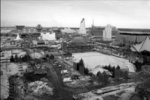
Expo 67
(Film muet) Une maquette détaillée du projet de l'exposition universelle de Montréal de 1967 permet de mesurer toute l'étendue de ce projet grandiose. Puis une vue aérienne montre l'avancement des travaux. Ingénieurs et travailleurs sont à l'œuvre pour mener à bien l’aménagement du site. On voit notamment l'édification de la gigantesque sphère abritant le pavillon des États-Unis et celles des nombreuses autres installations. Enfin, c’est le jour de l'ouverture et de nombreux visiteurs envahissent le site.
-

Jacques Cartier
(Film muet) Ce film présente divers monuments et évènements commémorant les découvertes et les voyages de Jacques Cartier au Canada. Sur l’avenue du Parc à Montréal, on assiste à une célébration devant le monument érigé à la mémoire de Cartier. En 1935, à North Bay, Ontario, la communauté canadienne-française érige une croix pour commémorer l’arrivée de Cartier en 1534. On voit aussi la réplique du bateau la Grande Hermine lors de l’Expo 67 à Montréal, à l’occasion d’une animation historique. On découvre aussi les stèles gravées d’images et d’écritures retraçant la rencontre historique entre Cartier et les Amérindiens, à Gaspé.
Article :
Jacques Cartier -

Jardin botanique de Montréal
Ce film présente un aperçu du Jardin botanique, des multiples variétés de plantes et de fleurs qu’on y trouve et de l’intérêt qu’il suscite parmi la population. On assiste à la construction de serres et de nouveaux pavillons qui ont marqué son histoire, ainsi que la grandeur des aménagements paysagers qui en font un attrait touristique majeur de la ville de Montréal, révélant l'ampleur du projet initial du frère Marie-Victorin.
-

La rivalité entre les Canadiens de Montréal et les Maple Leafs de Toronto. Extraits des archives de l'Office national du film du Canada
Ce film présente quelques images des matchs entre les Canadiens de Montréal et les Maple Leafs de Toronto, deux clubs rivaux de la Ligne nationale de hockey, créés dès les années 1930, à l'époque des joueurs vedettes Howie Morenz et Sylvio Mantha. Extraits tournés au Maple Leafs Gardens et au Forum de Montréal.
-

Fabrication de meubles
(Film muet) Ce film présente une exposition de meubles anciens tenue au Château Ramezay, à Montréal, en 1963. On voit également l’École du Meuble de Montréal, en 1947, où des étudiants réalisent des chaises dans les ateliers. On montre les différents types de bois utilisés, les croquis de meubles différentes techniques de fabrication. Les dernières images présentent divers styles de meubles produits à différentes périodes du XXe siècle.
Article :
The Château Ramezay Museum, Montreal -

Le Mont Royal
(Film muet) Ce film présente diverses scènes d’activités récréatives captées entre 1901 et 2000 au parc du Mont Royal, à Montréal. On y voit des glisseurs dévaler les pentes et le funiculaire qui conduit au sommet au début du XXe siècle, des activités équestres dans les années 1920, des skieurs et des promeneurs en traineau dans les années 1940-50, des patineurs à la fin des années 1960, ainsi que la fête de la Saint-Jean Baptiste qui s’y est déroulée en 1975. On assiste enfin aux fameux rassemblements du dimanche dits « tams tams » de Montréal, populaires depuis la fin des années 1970.
Article :
Mount Royal Park, a Precious Natural and Cultural Heritage -

Le stade olympique de Montréal
Clip vidéo (avec narration) présentant l'évolution du stade olympique de Montréal et les diverses manifestations (culturelles, religieuses, sportives) qu'il accueille depuis 1976. Durée : 4 min 19 sec
Article :
The Montreal Olympic Stadium Complex
Documents sonores
-

« Le bas de Noël »
Interprète : Madame Édouard Bolduc (dite La Bolduc). Enregistré en 1930 par Compo Company Limited [Montréal, QC]. Numéro de tirage: 15771. Durée : 2 min 20 sec. Extrait du Gramophone virtuel. Site Web de Bibliothèque et Archives Canada, www.collectionscanada.ca © Domaine public
Article :
Christmas Celebrations -

« Voilà le Père Noël qui nous arrive »
Interprète : Madame Édouard Bolduc (dite La Bolduc) et sa famille. Enregistré en 1931 par Compo Company Limited [Montréal, QC]. Numéro de tirage: 15855. Durée : 3 min 16 sec. Extrait du Gramophone virtuel. Site Web de Bibliothèque et Archives Canada, www.collectionscanada.ca © Domaine public
Article :
Christmas Celebrations -

Mam'zelle Montréal [Baby Blue Eyes]
Interprète : Gaston Saint-Jacques. Auteur/Compositeur : G. Jessel, W. Hirsch, J. Greer (traduction de Roméo Beaudry). Album : Starr-Gennett 12076-A, 1923.
Article :
First Recordings of Popular Songs in French Canada -
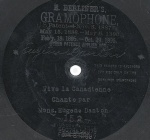
« Ô Canada mon pays mes amours! »
Durée de: 2 min 48. Ô Canada mon pays mes amours! Georges-Étienne Cartier (auteur); Jean-Baptiste Labelle (interprète) Montréal, 1941 Bluebird, B-1222 Extrait de la collection d’enregistrements sonores Bibliothèque et Archives nationales du Québec
-

« Vive la Canadiennne »
Durée de: 2 min 10. Vive la Canadiennne : regimental march of Royal 22nd Regiment Anonyme (auteur) Fanfare de H.M. Canadian Grenadier Guards Dirigée par Jean-Josaphat Gagnier Montréal, His Master’s Voice, Victor 216611 Source : Site Web de la Bibliothèque et Archives Canada, www.collectionscanada.ca © Domaine public
Documents PDF
-
Extrait de la conversation de Tocqueville avec Mr. Neilson
Alexis de Tocqueville, Tocqueville au Bas-Canada. Écrits datant de 1831 à 1859. Datant de son voyage en Amérique et après son retour en Europe. Montréal, Les Éditions du Jour, 1973, 185 pages. Collection : “Bibliothèque québécoise ”. Présentation de Jacques Vallée. Taille: 58 Kb
Article :
Alexis de Tocqueville’s visit to Lower Canada in 1831 -
L'enregistrement de disques à Montréal
« L'enregistrement des disques à Montréal », Le Passe-Temps, no.649, 1919, p.519
Article :
First Recordings of Popular Songs in French Canada -
Histoire de Montferrand, l'athlète canadien, par Benjamin Sulte, Montréal, Camyré et Bilodeau, 1884
Article :
Jos Montferrand, Legendary Figure of the Ottawa Valley -
50e but de Maurice Richard
« Maurice Richard a compté son 50e but à Boston », Montréal Matin, 19 mars 1945, p.19
-
Liste des chars allégoriques de la procession de 1925 à Montréal
Taille: 49 Kb
-
Liste des thèmes des processions de la Société Saint-Jean-Baptiste de Montréal depuis 1924
Taille: 42 Kb
-
Procession de la Saint-Jean-Baptiste à Montréal en 1934
René O. Boivin, « C'est l'âme national qui vibre en la Fête ... », La Patrie, 25 juin 1934, p.1-2
-
Rapport d'une séance de la Convention anti-seigneuriale de Montréal
D. Latte, « Convention anti-seigneuriale de Montréal », La Minerve, 31 août 1854, p.2
-
«Une découverte fascinante», Montréal Matin, 13 juin 1964, p. 7.
Article évoquant la restauration du portrait de Marguerite Bourgeoys. Taille: 700Ko
Article :
True Portrait of Marguerite Bourgeoys



